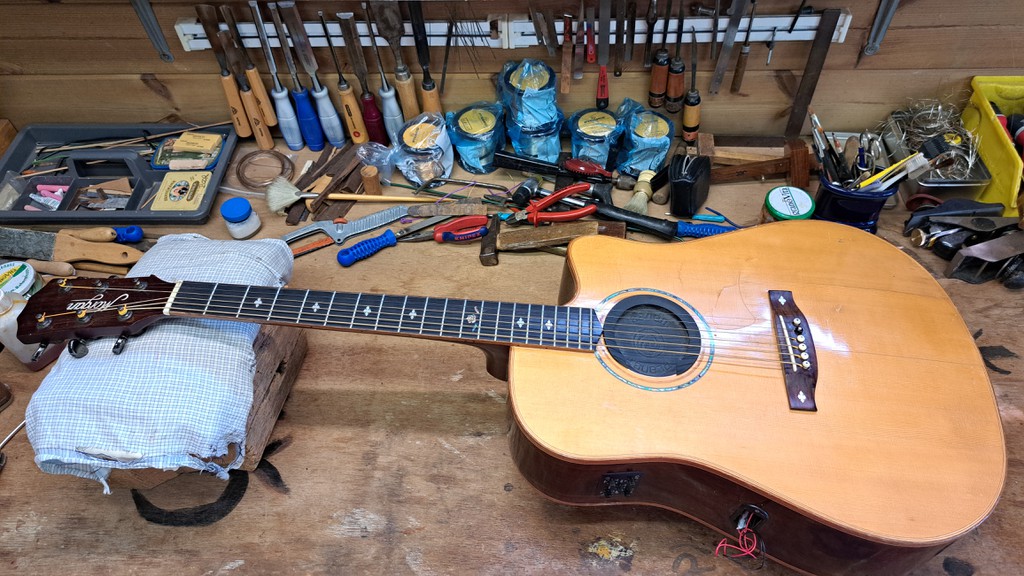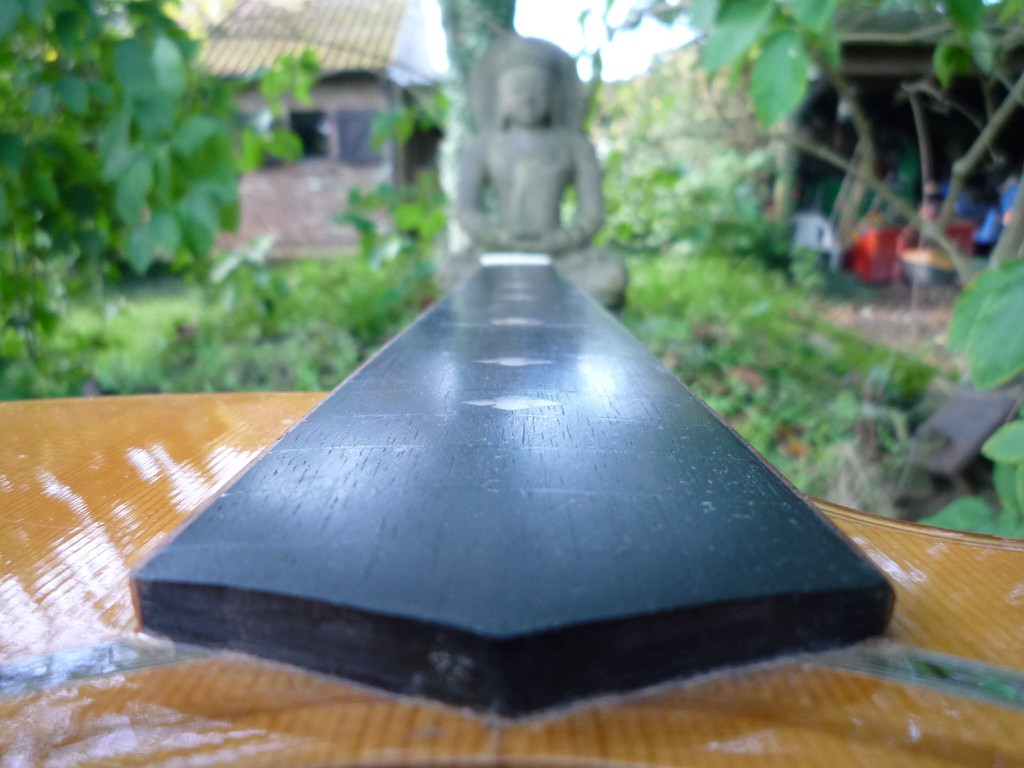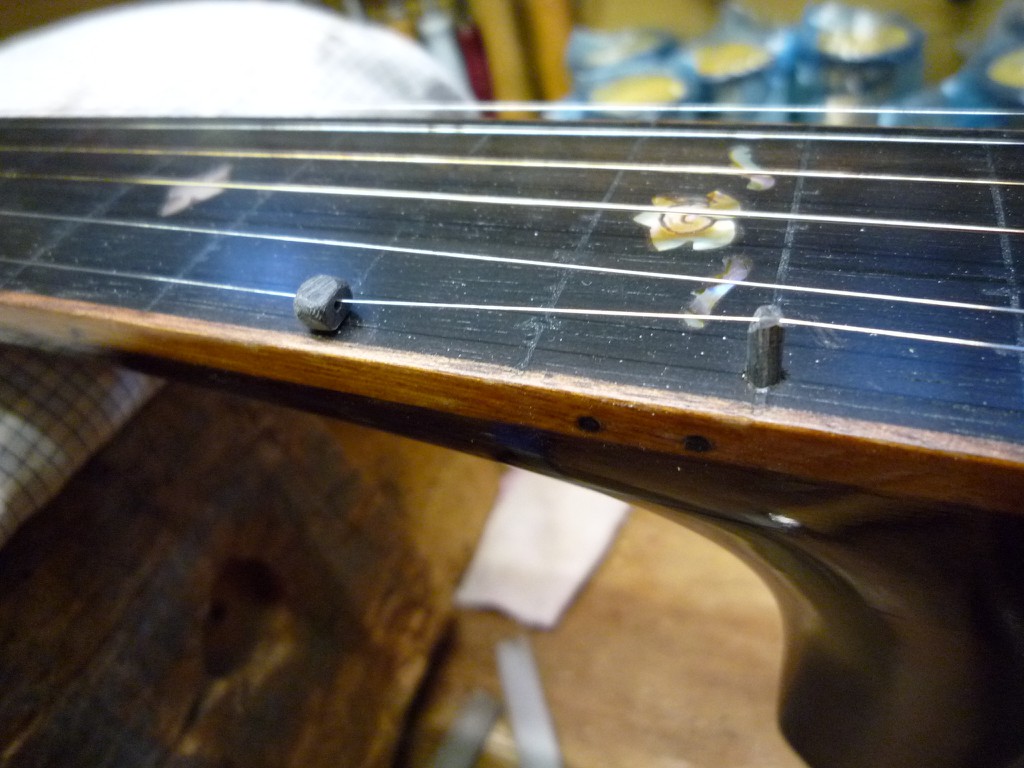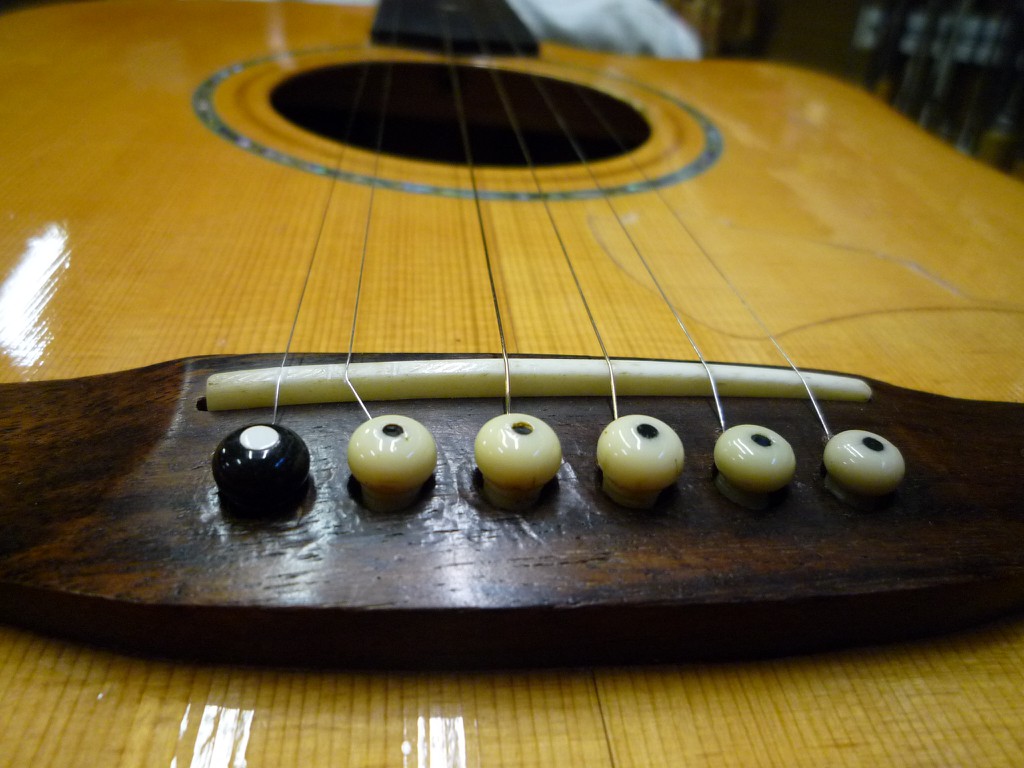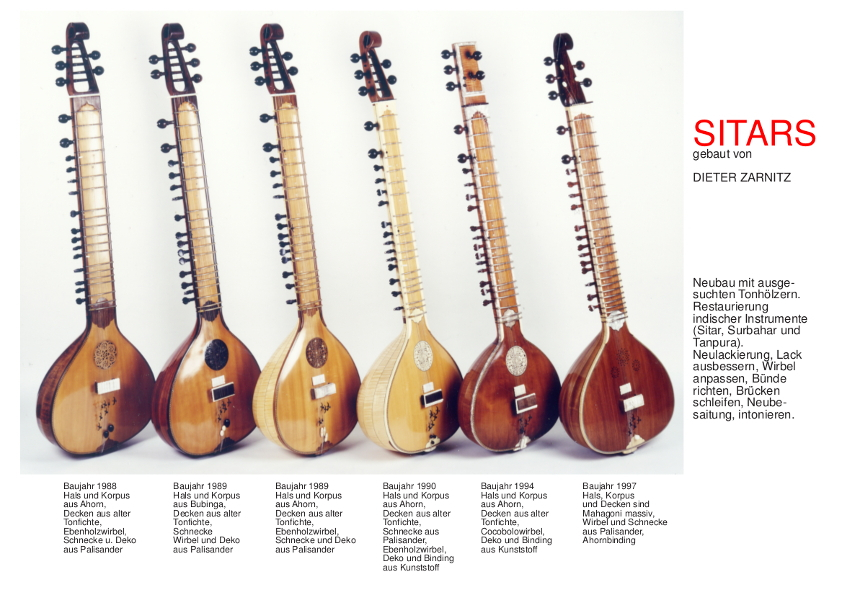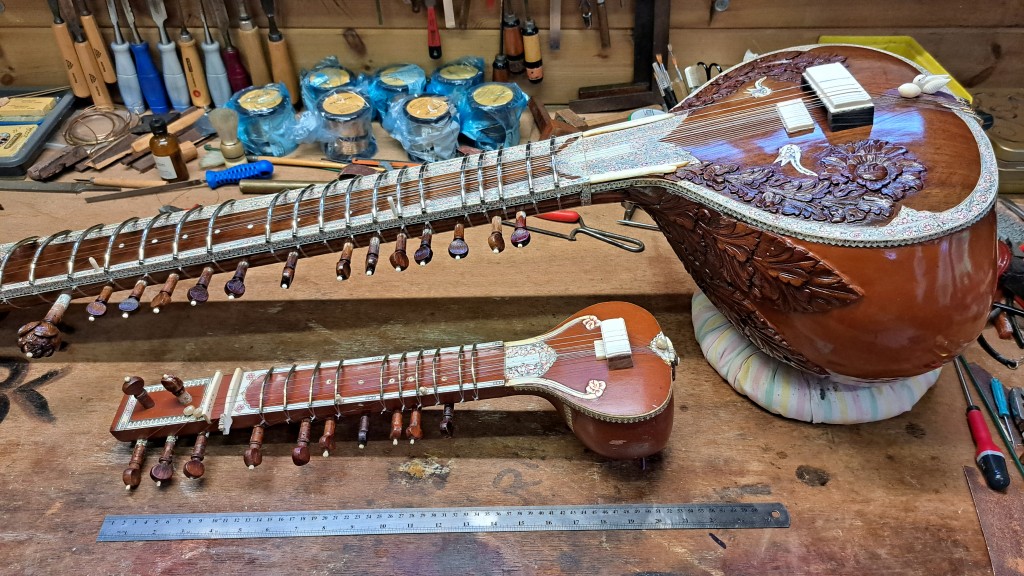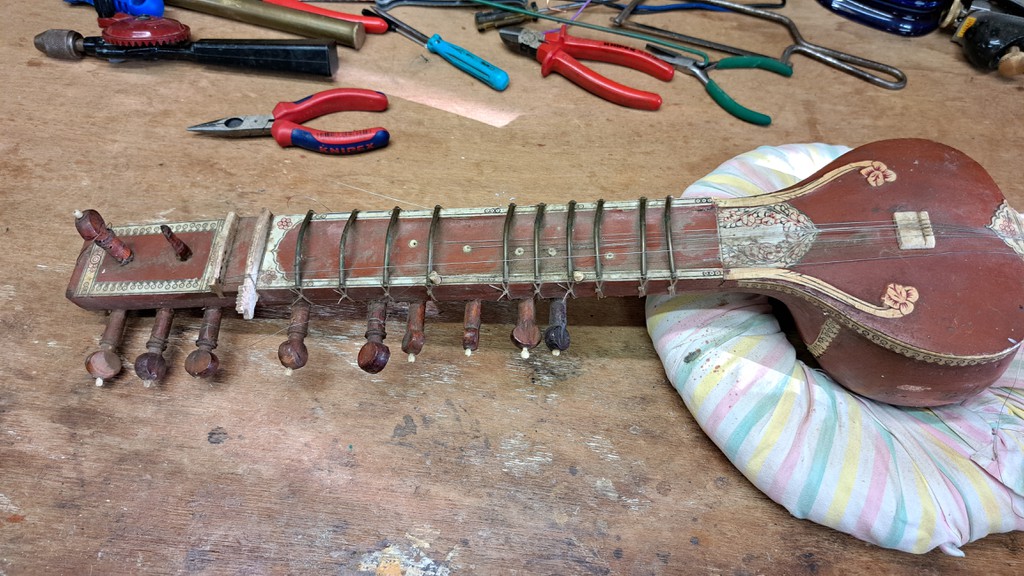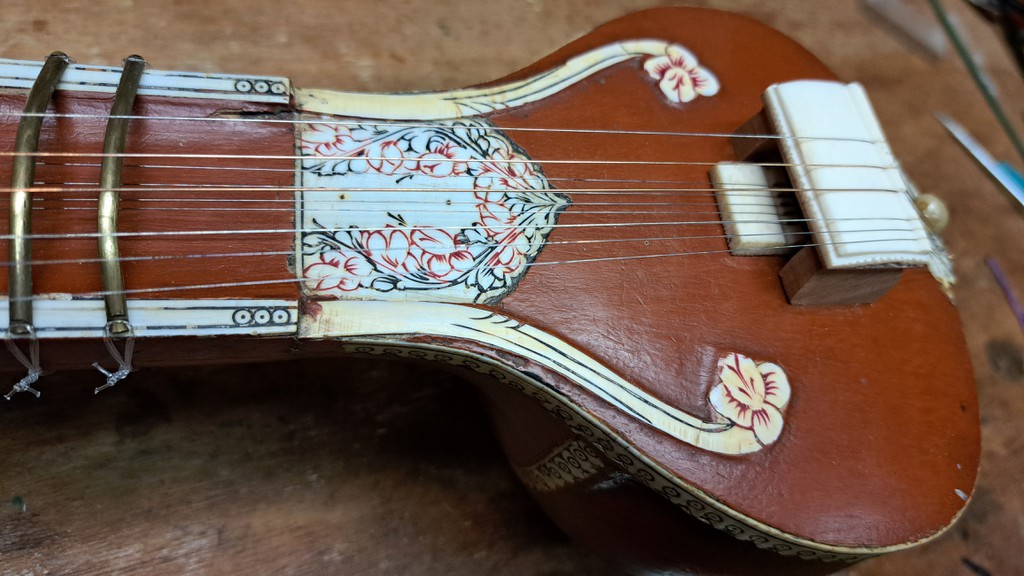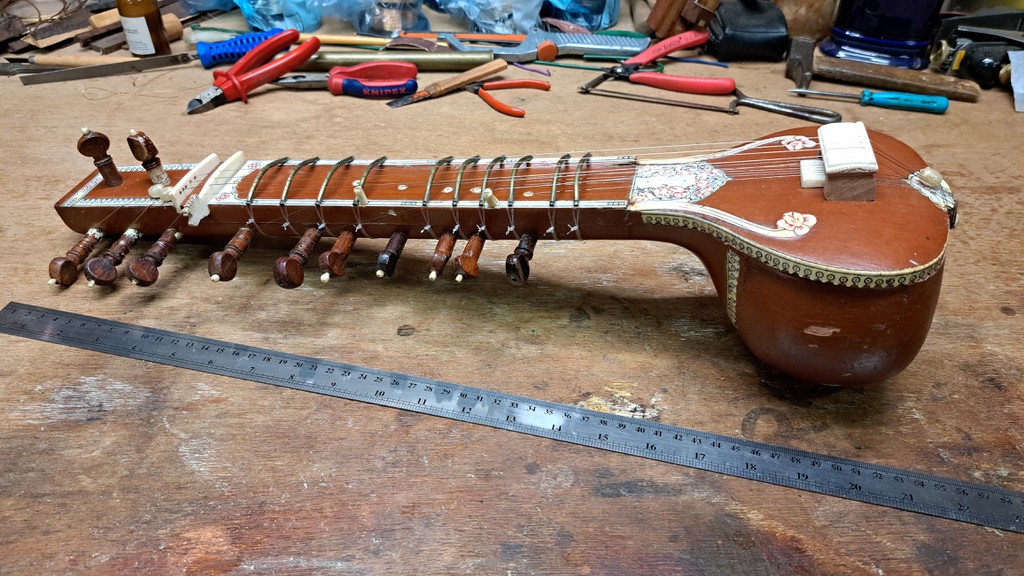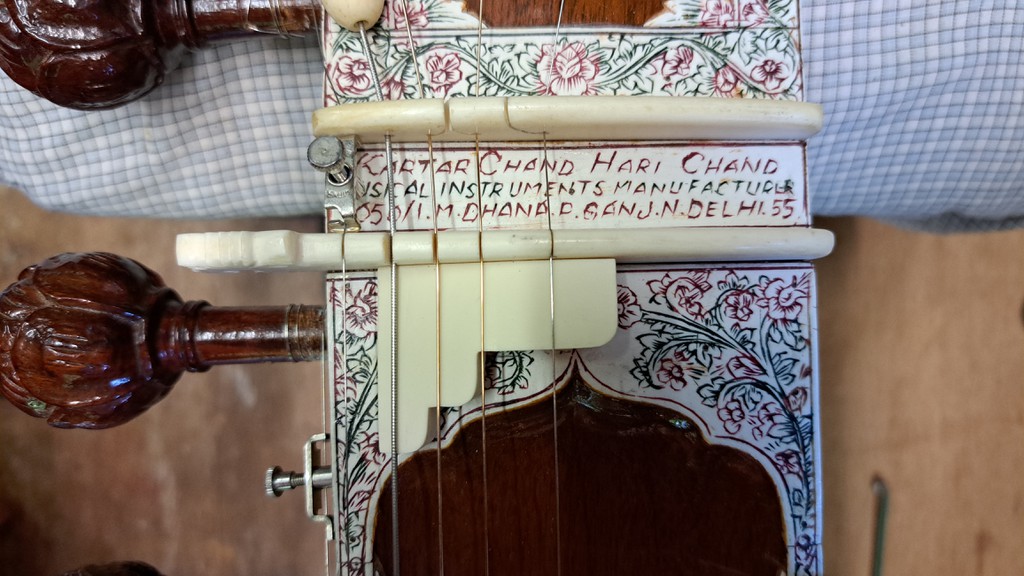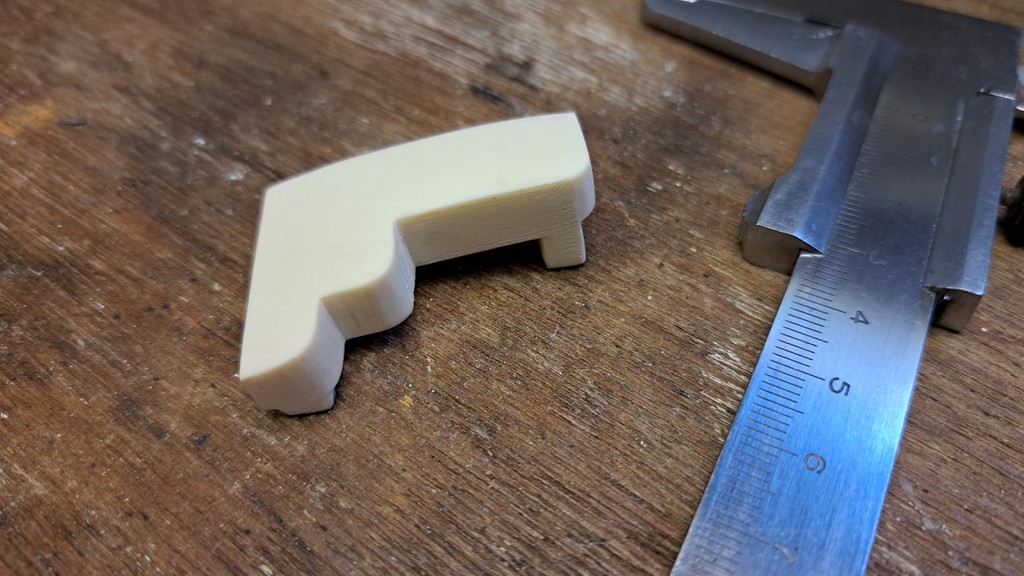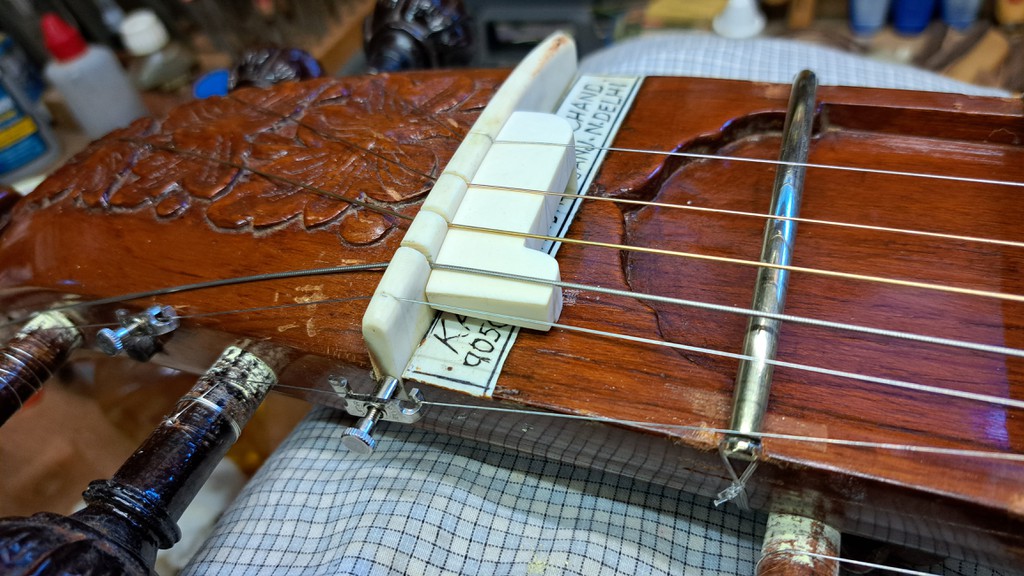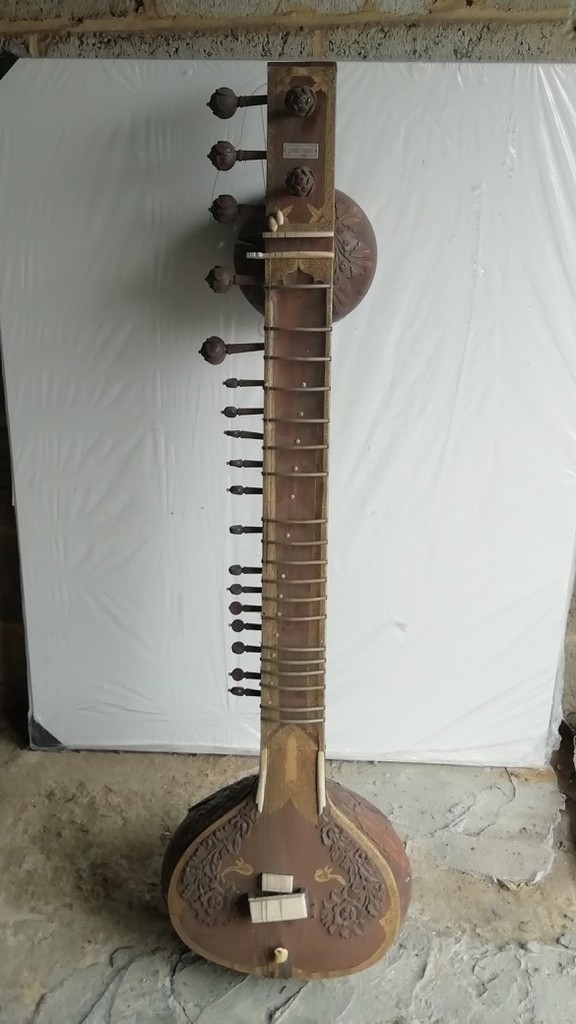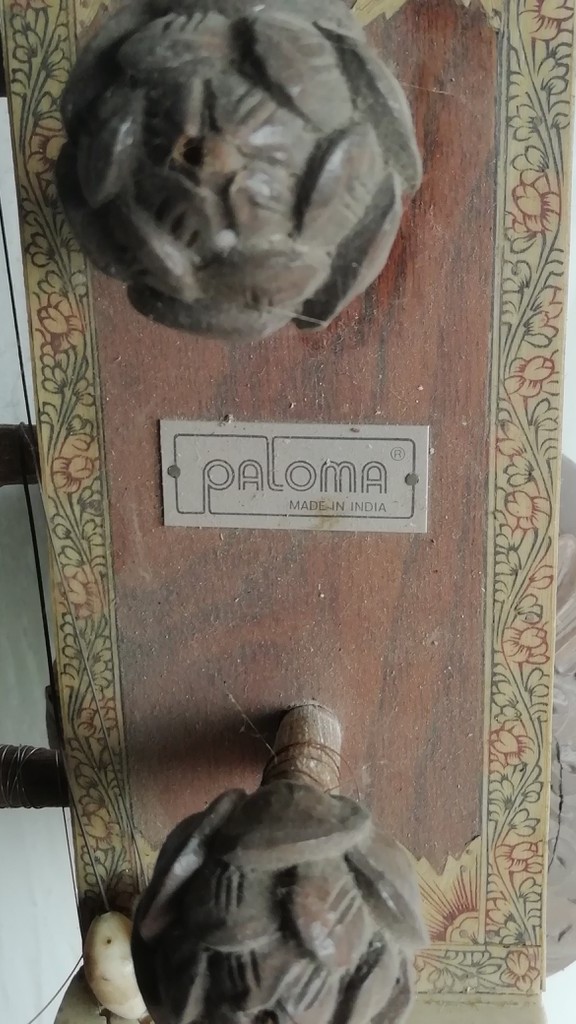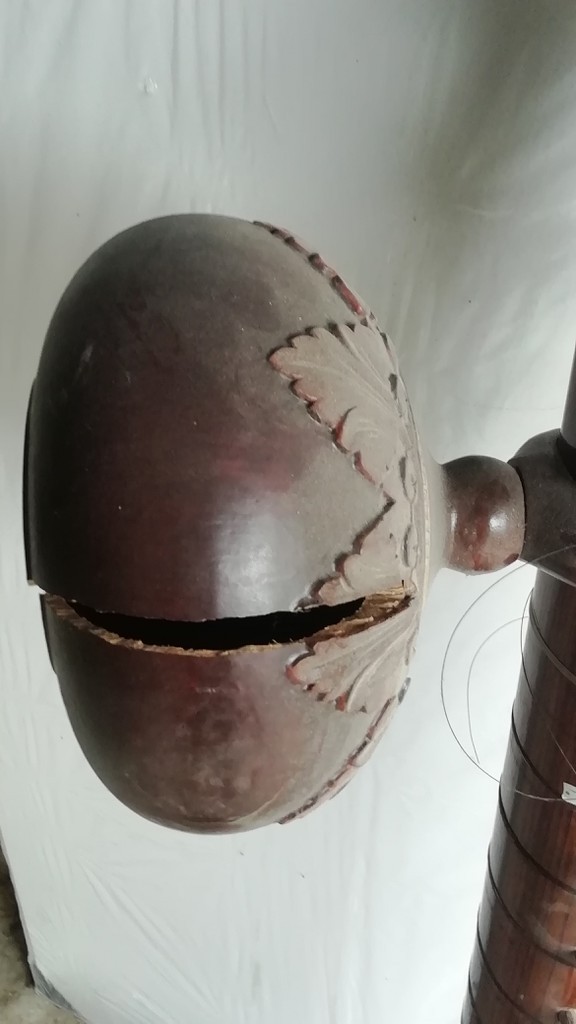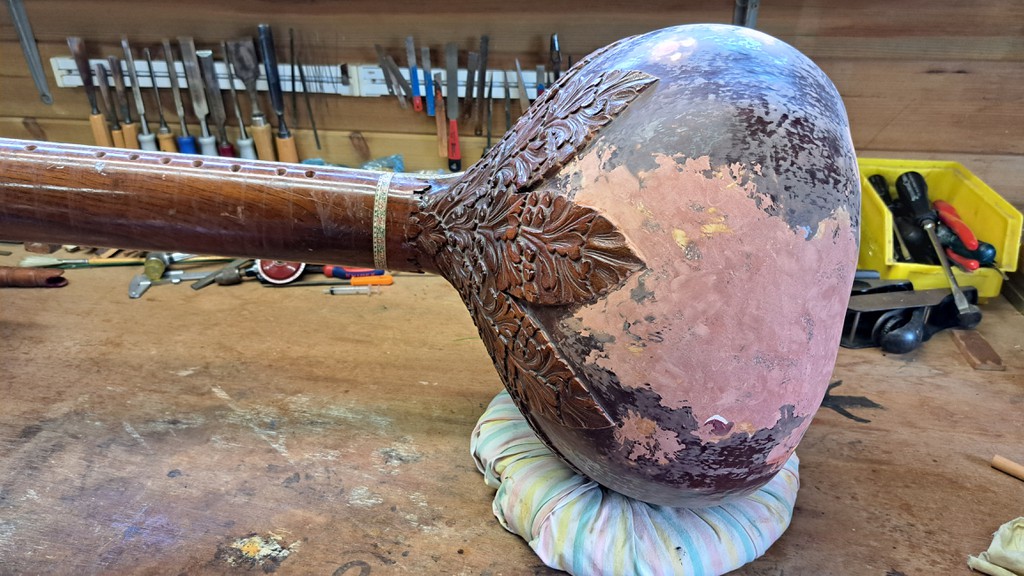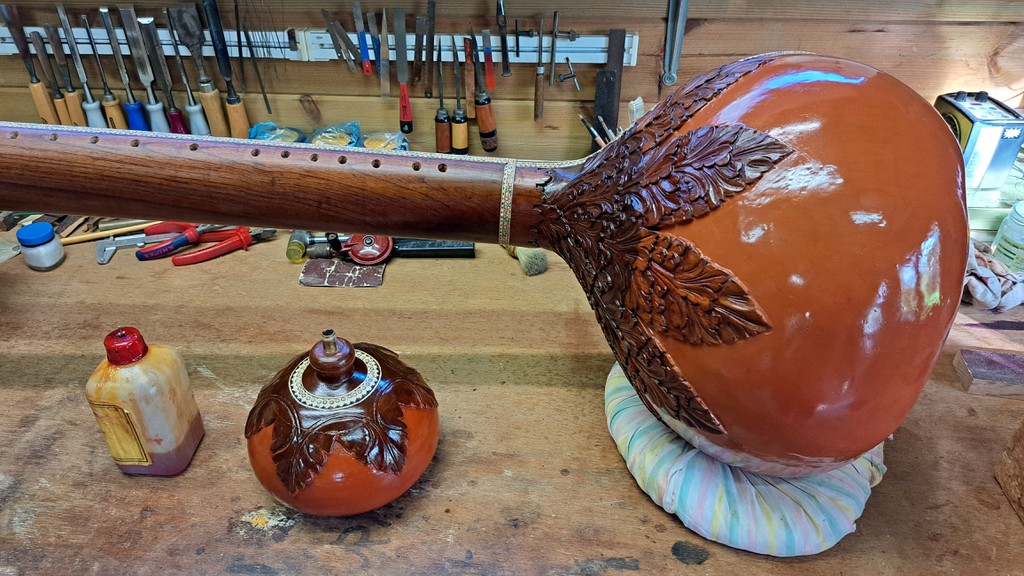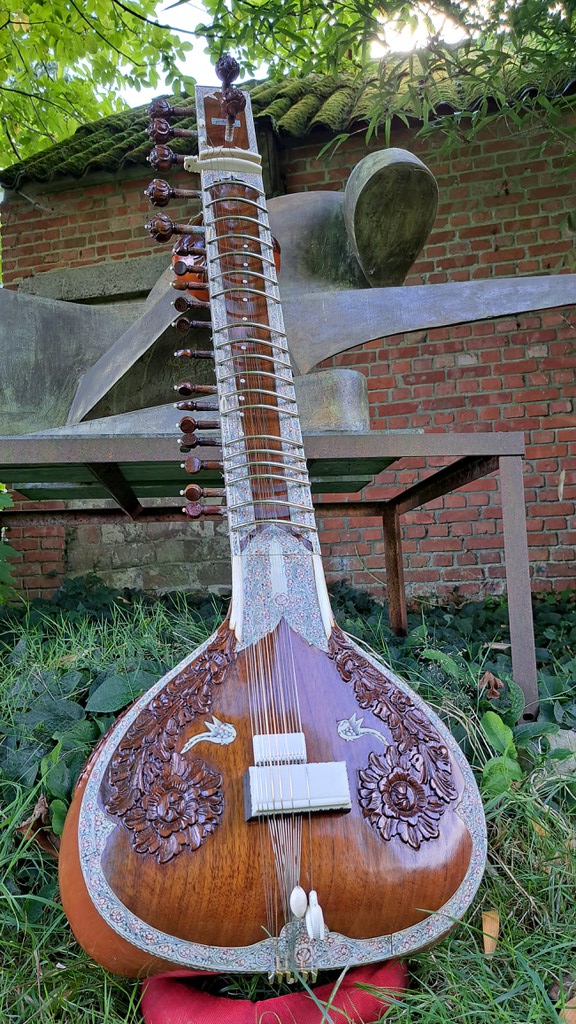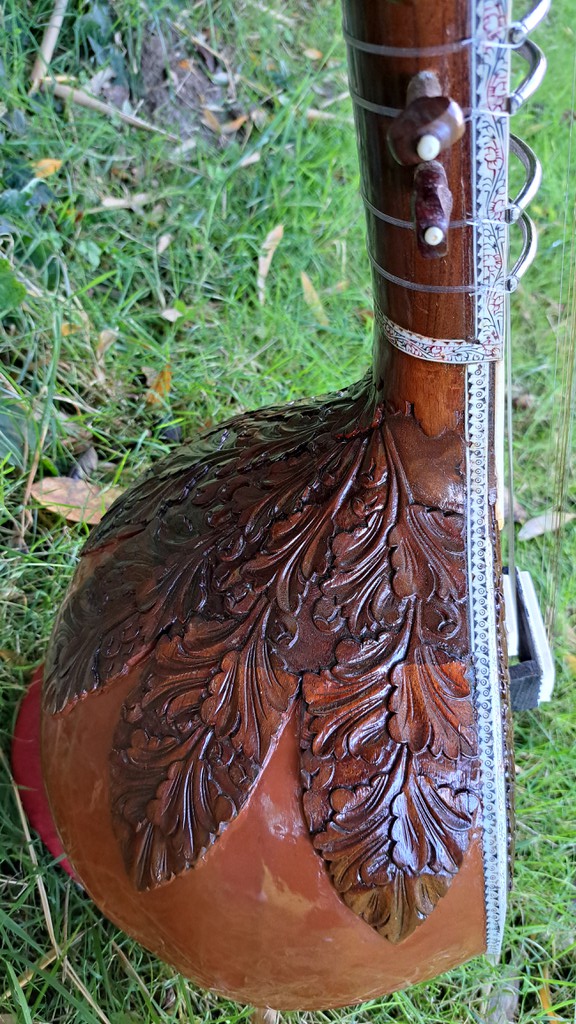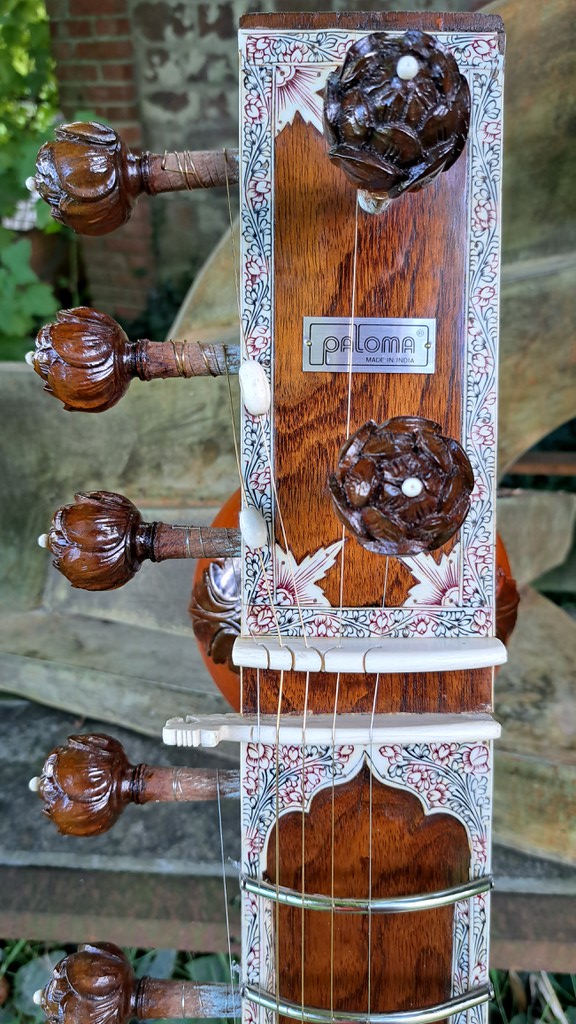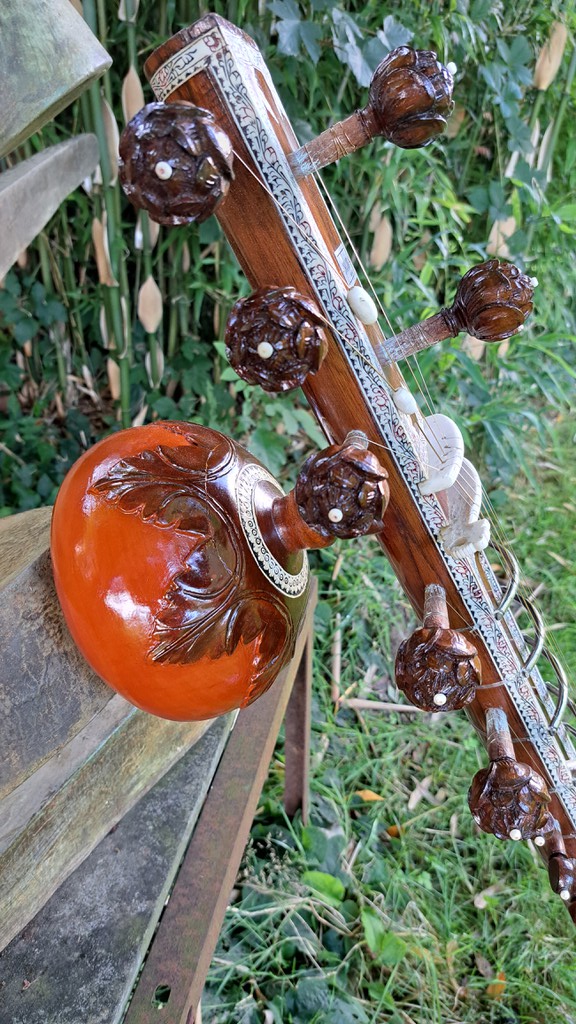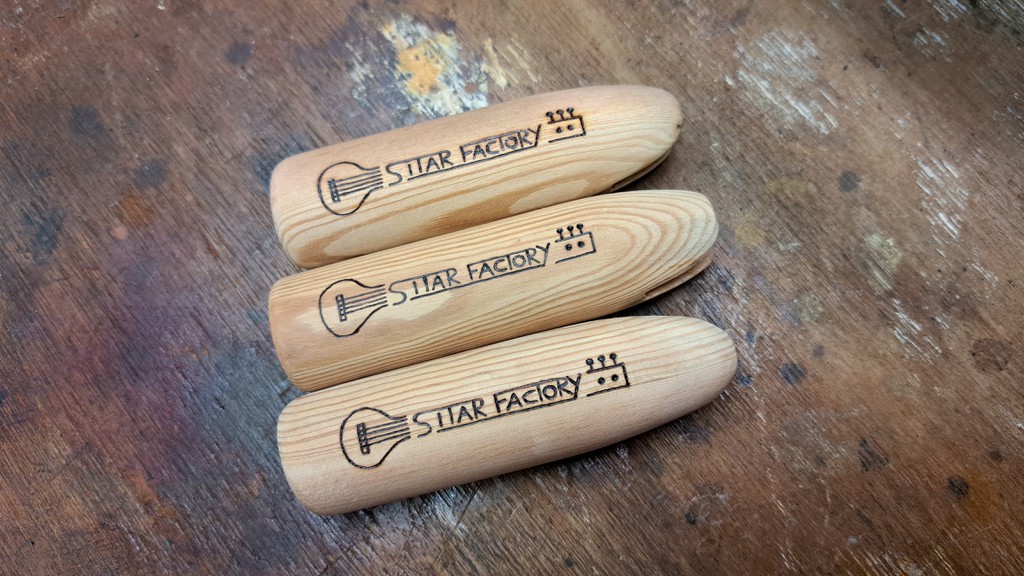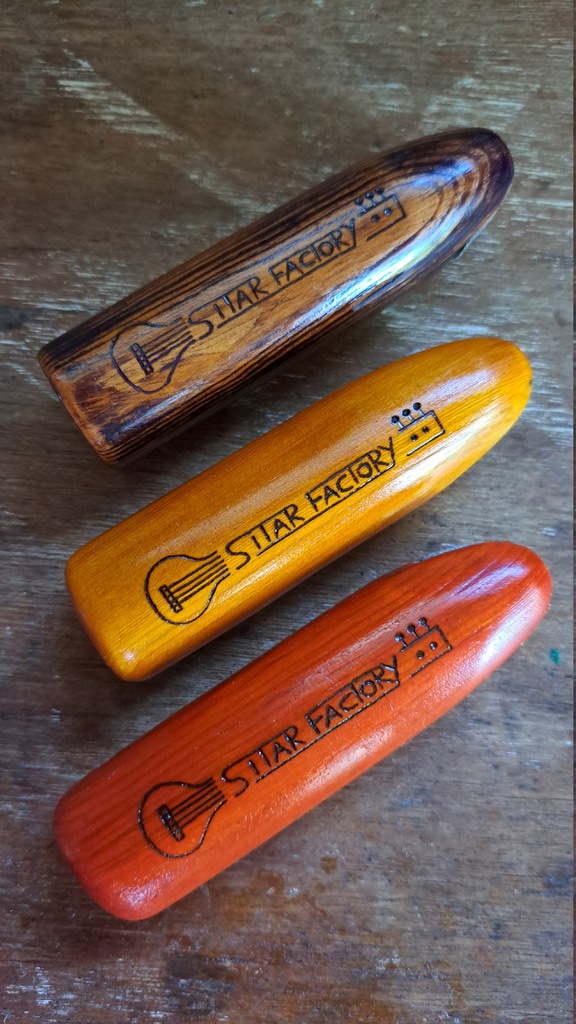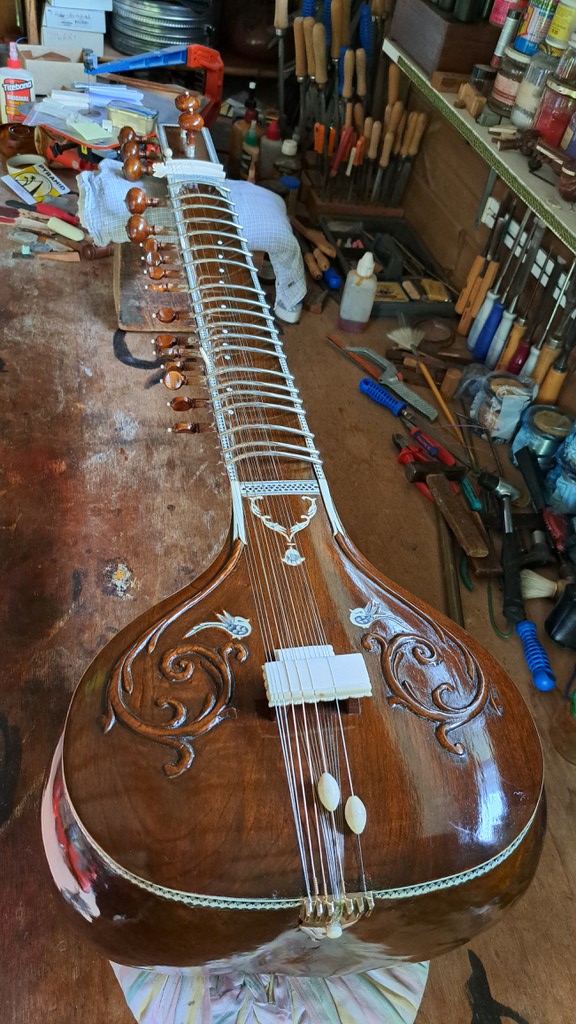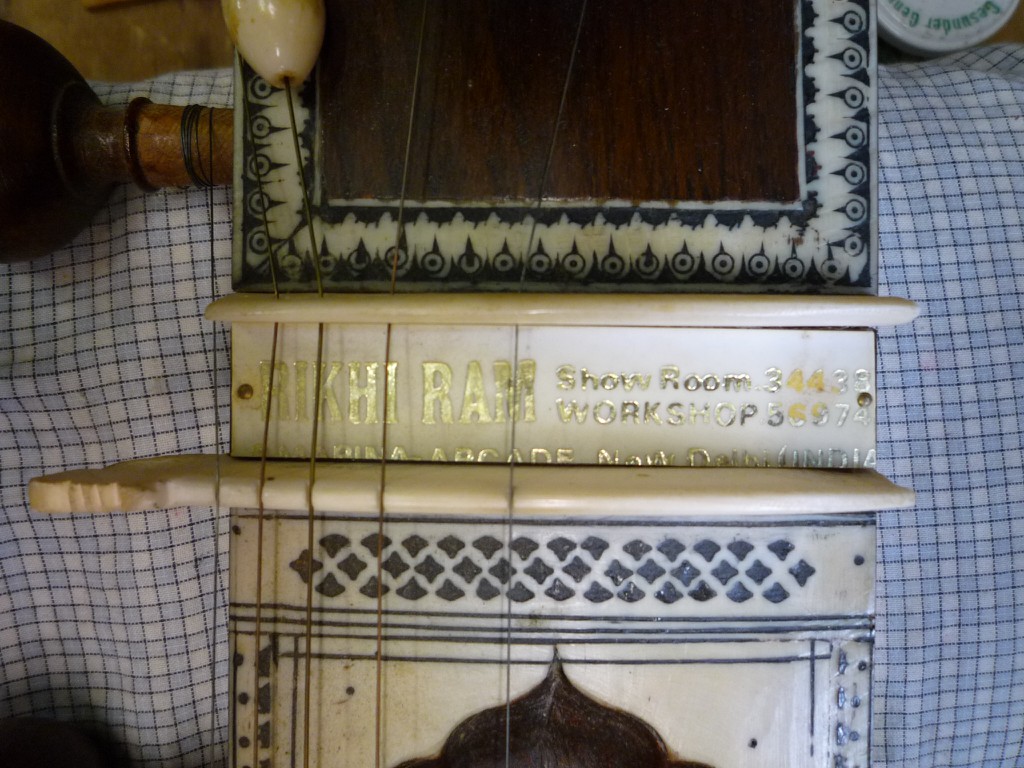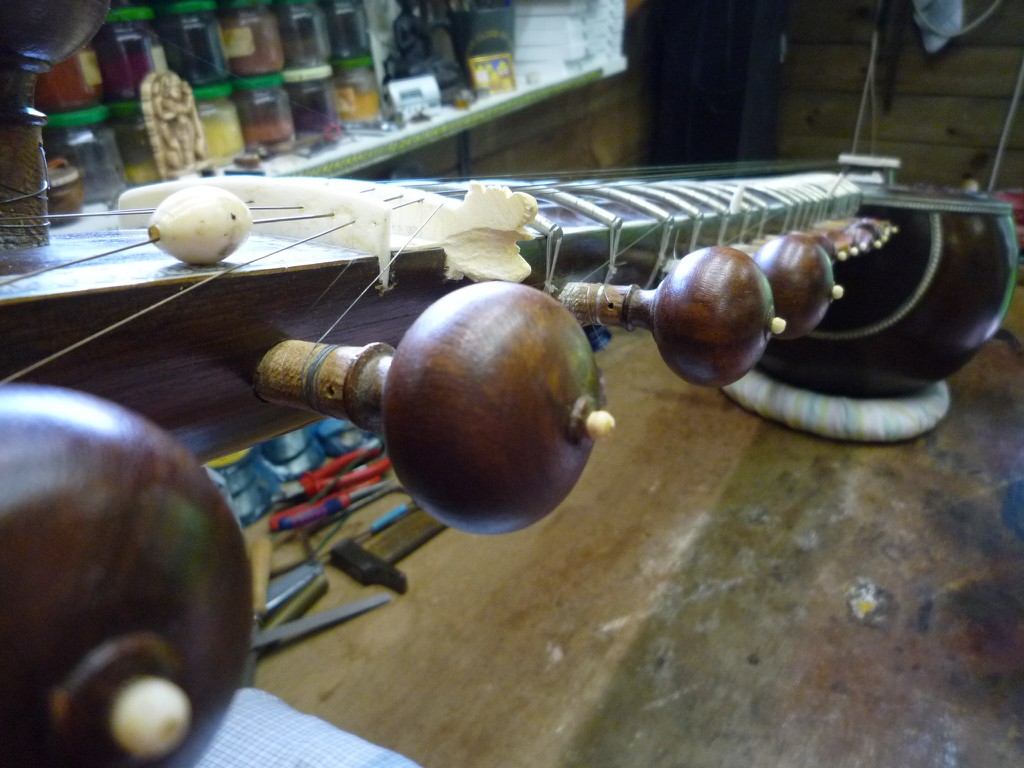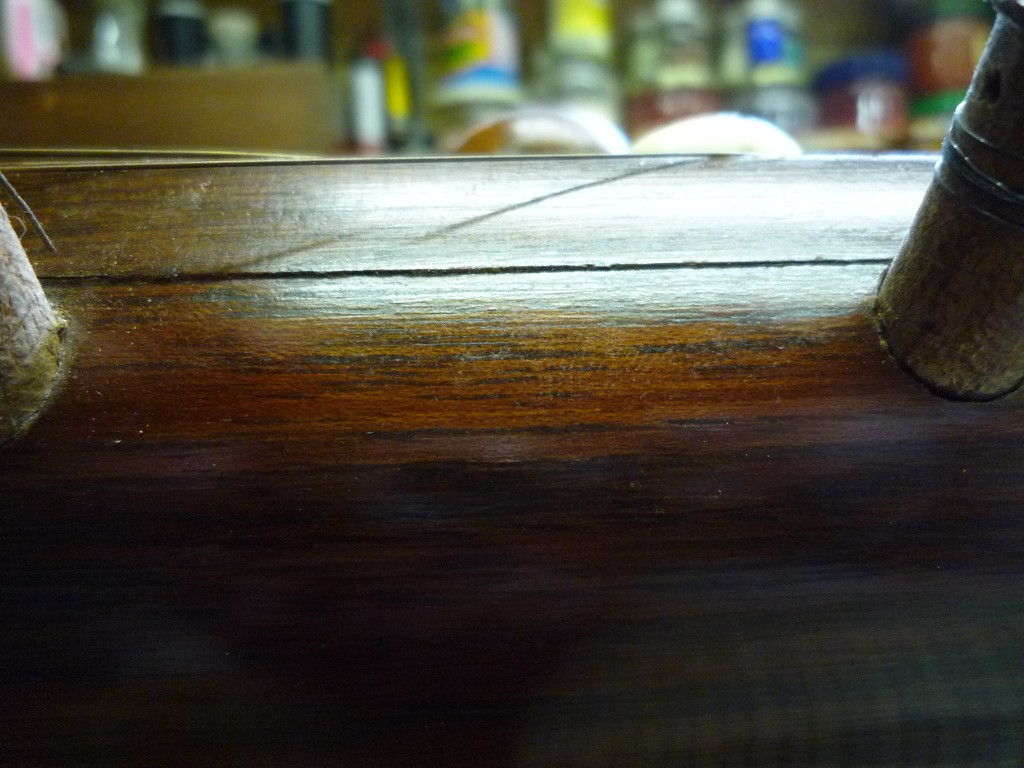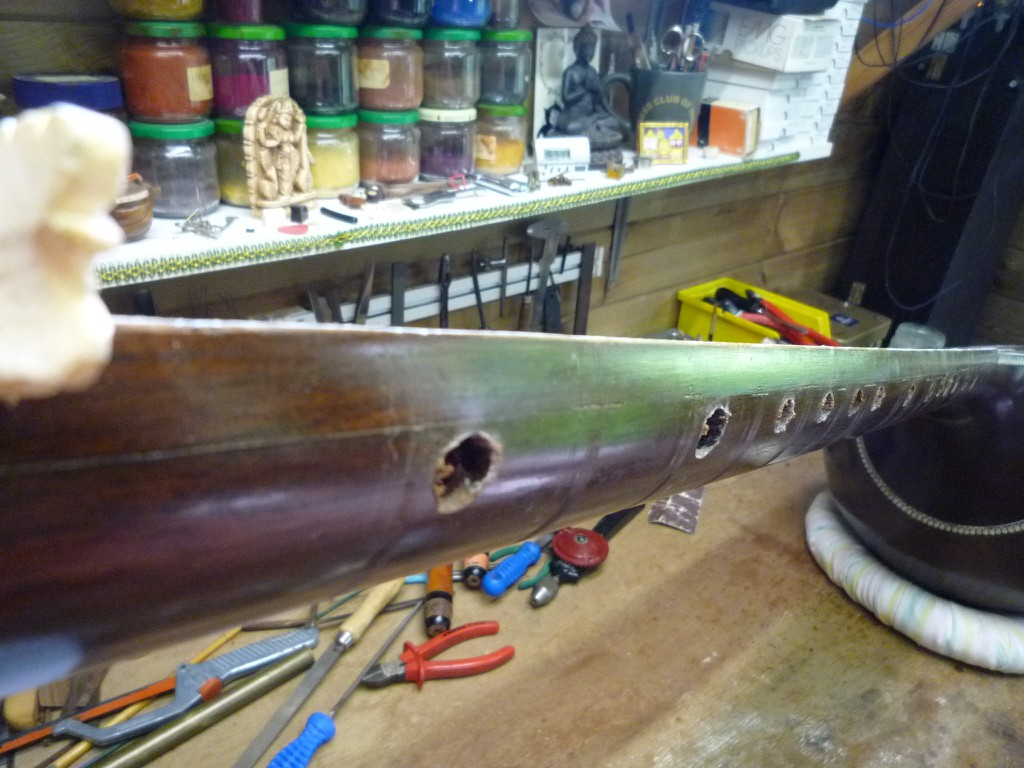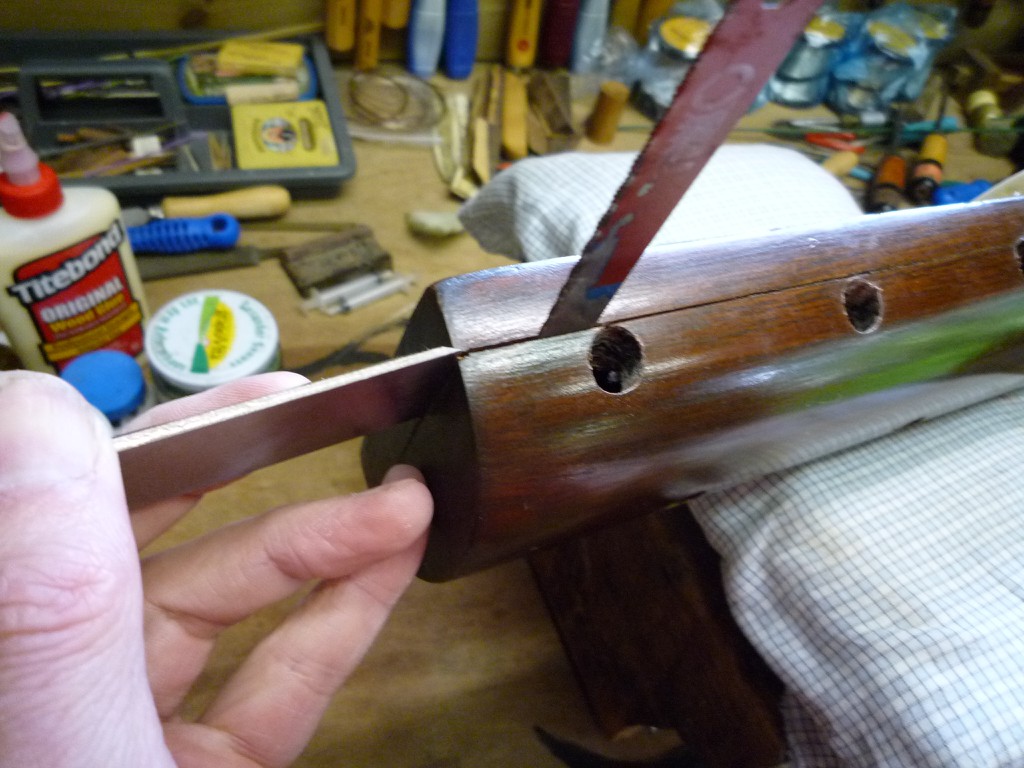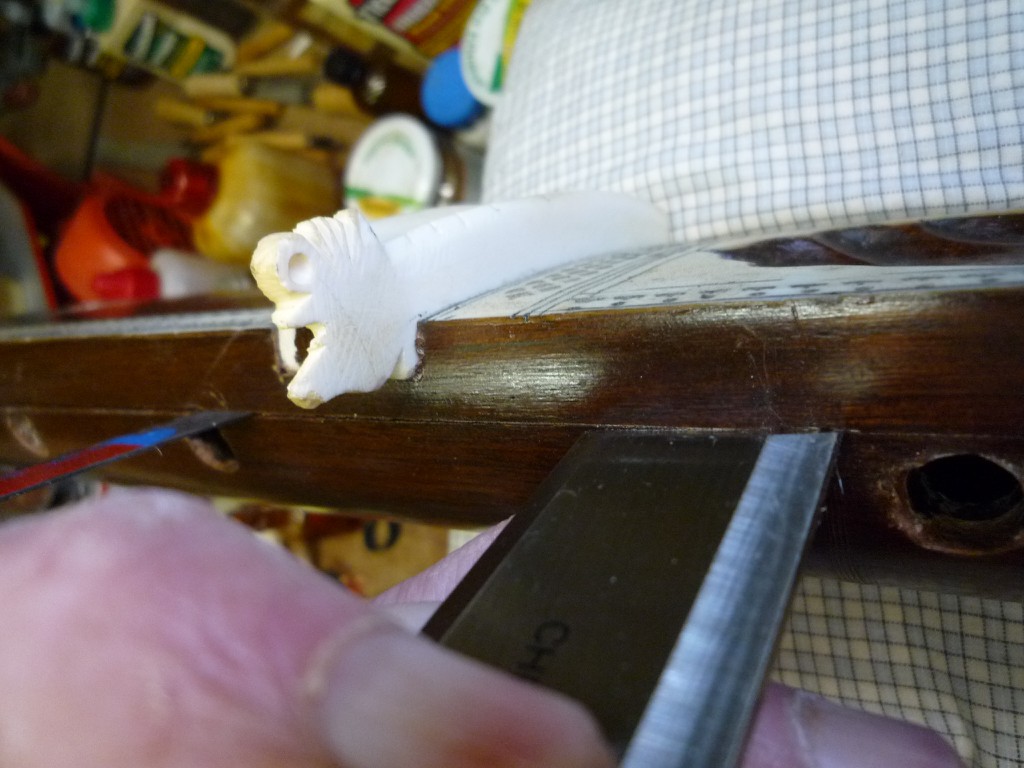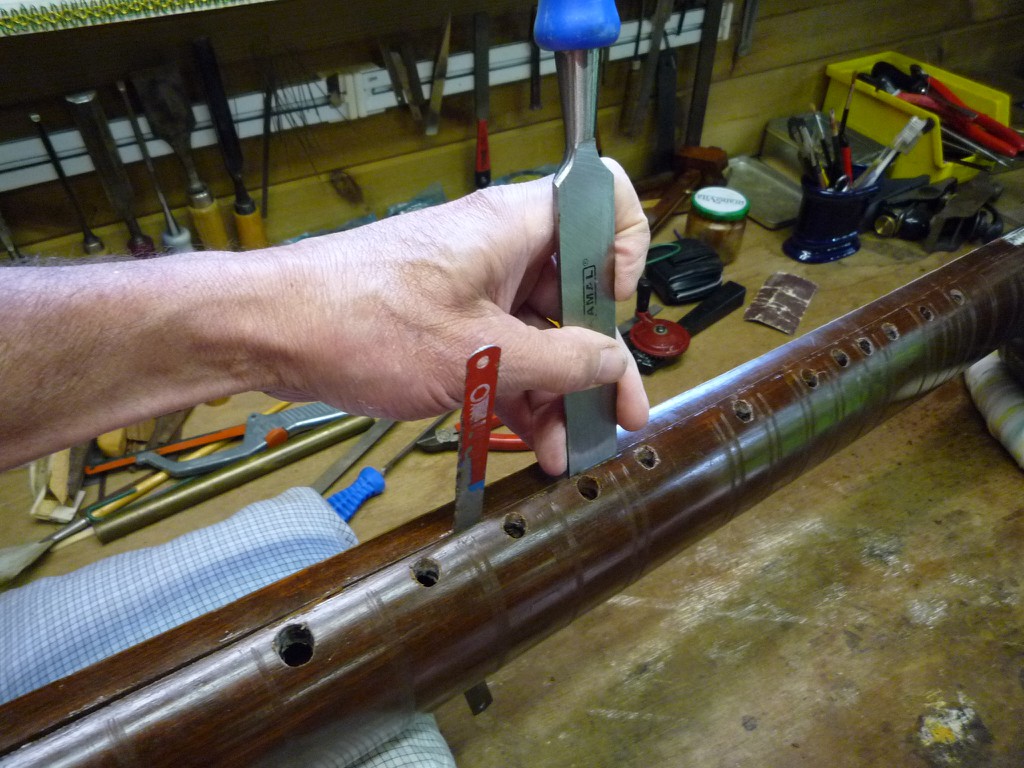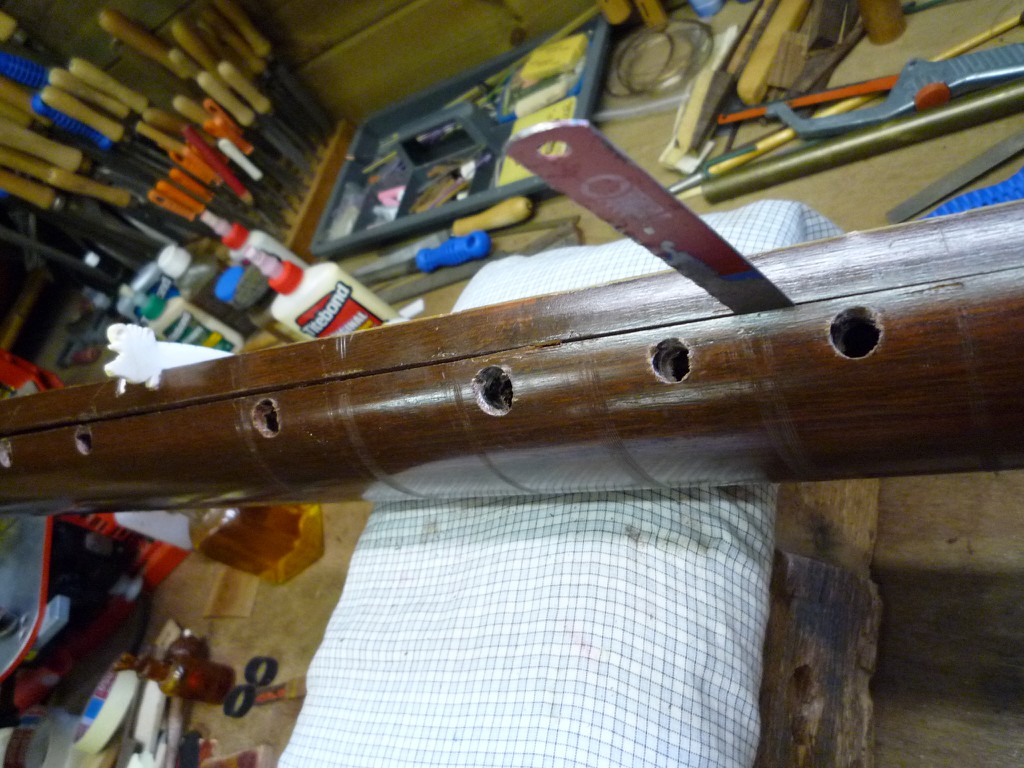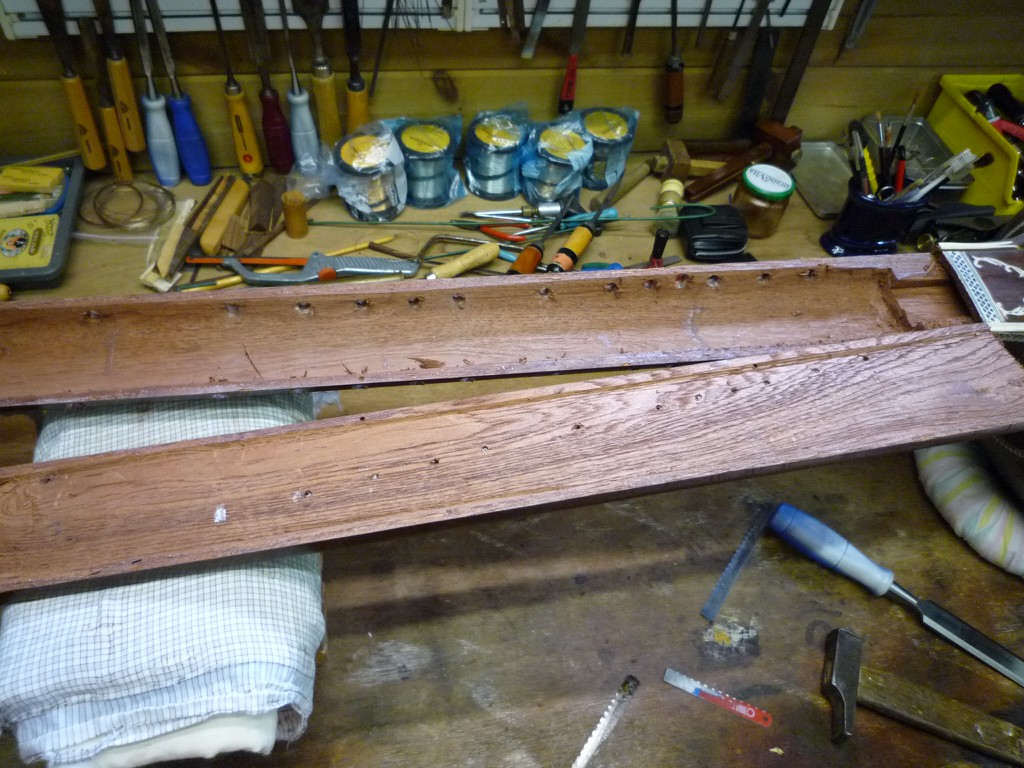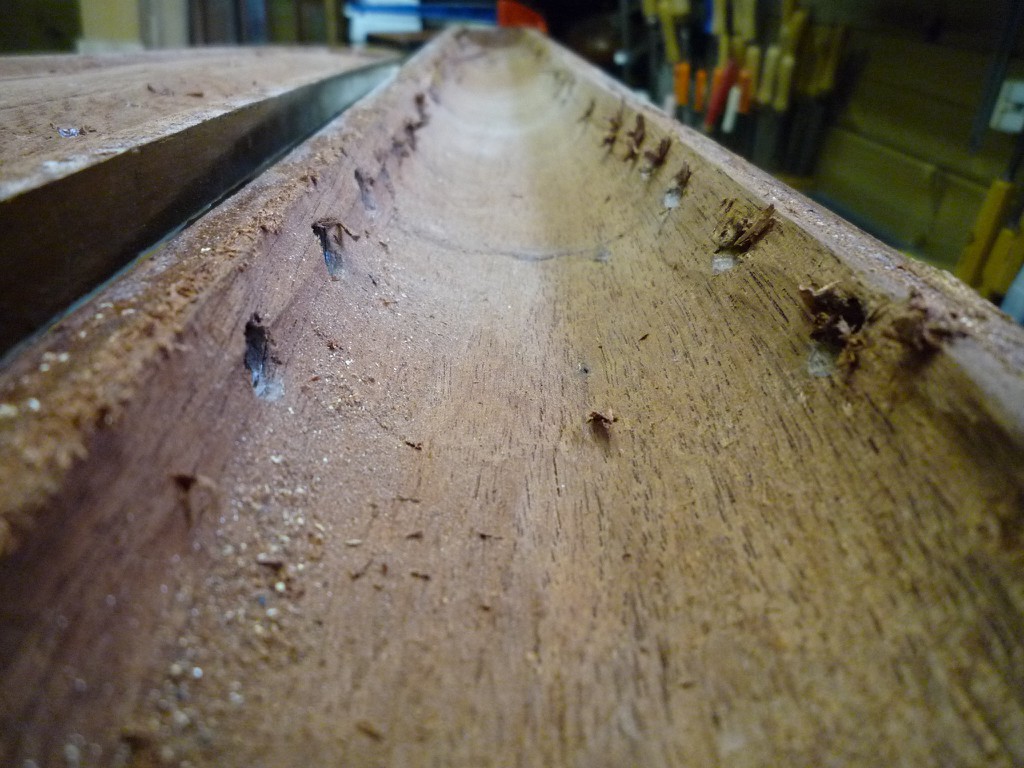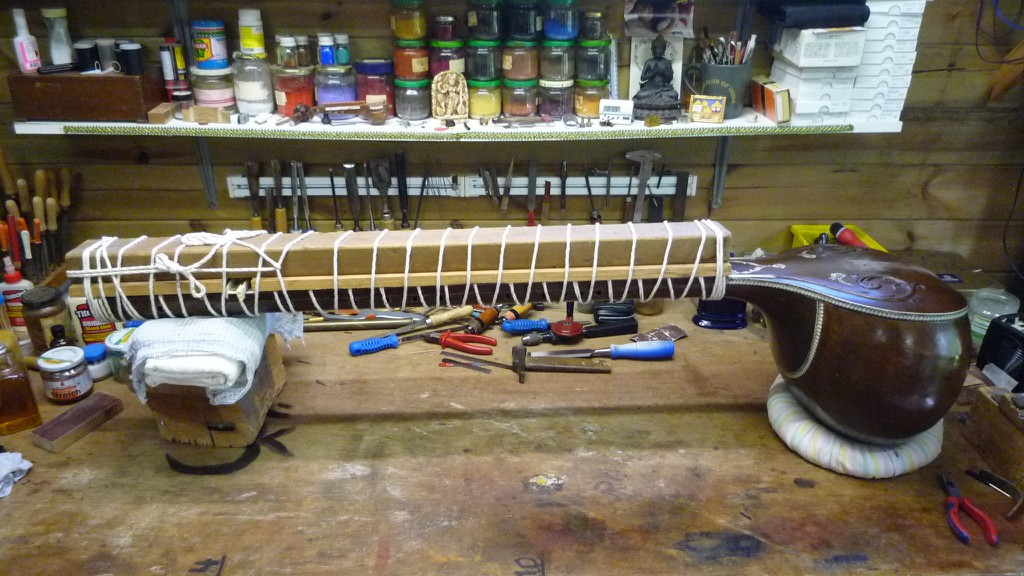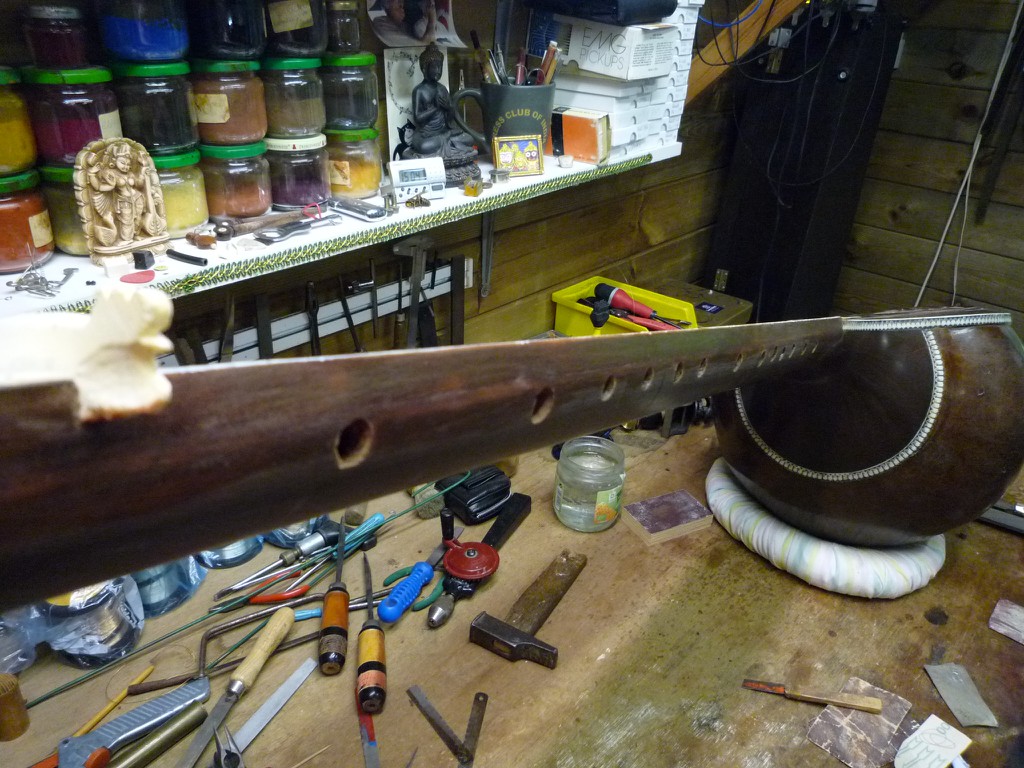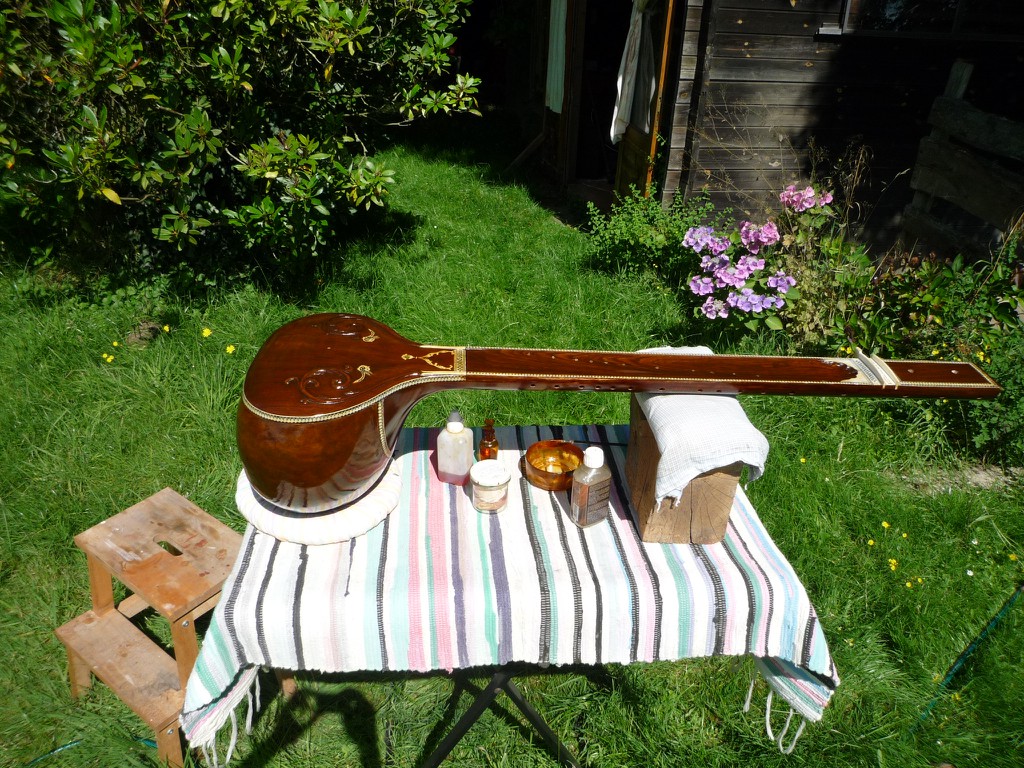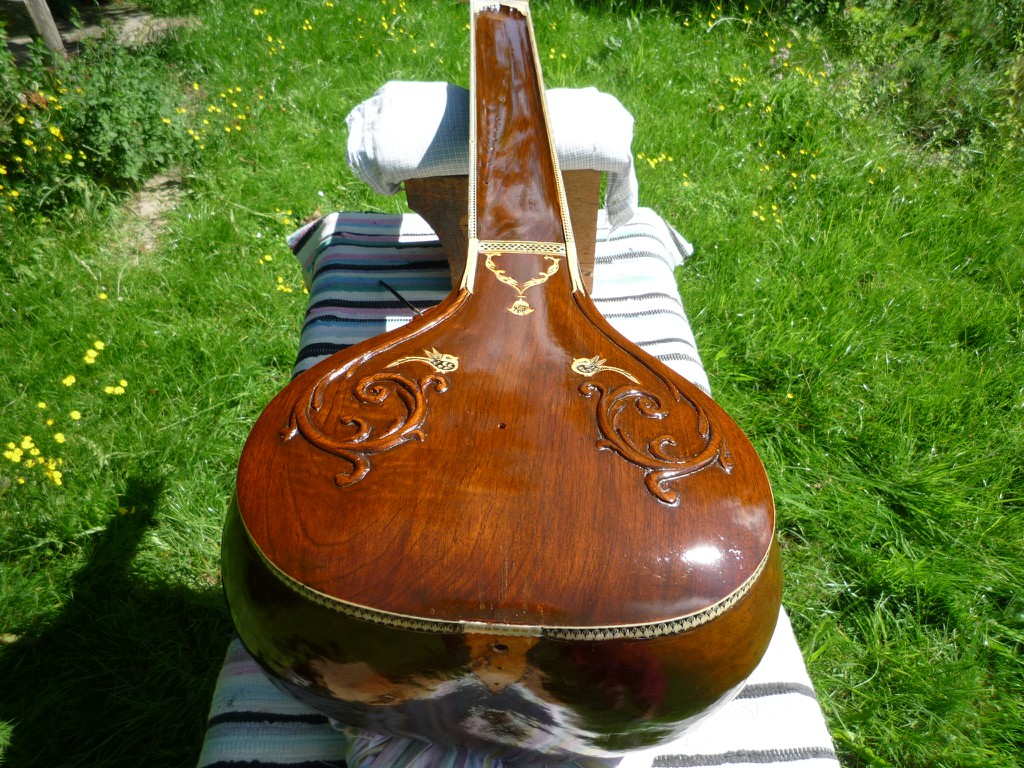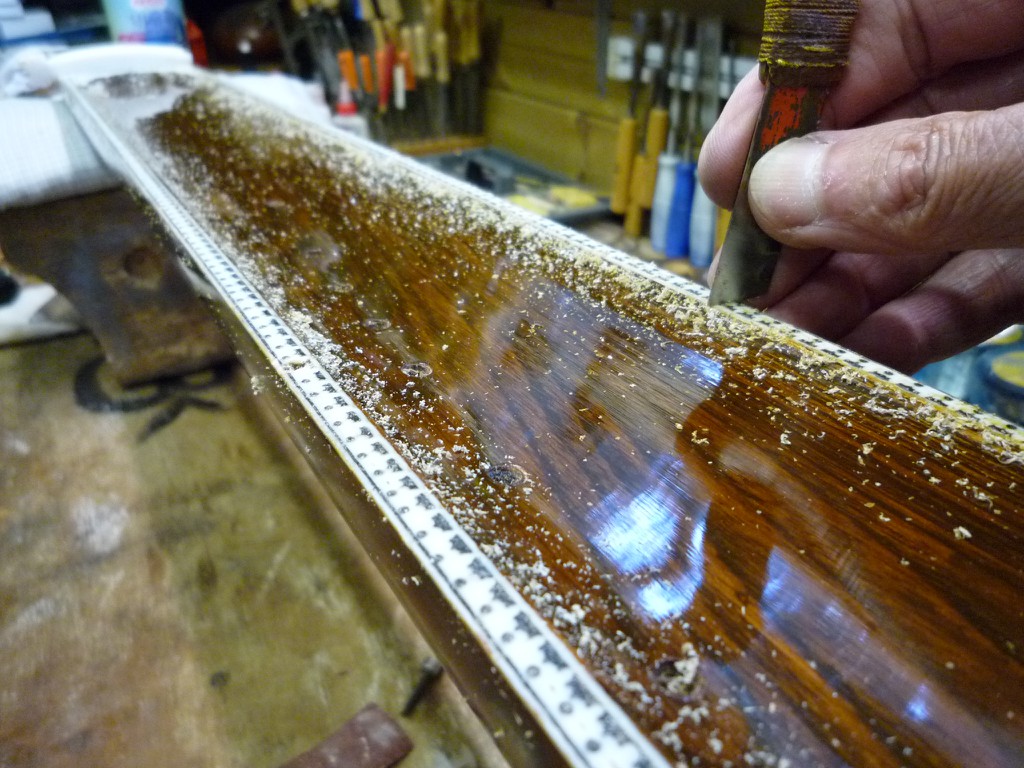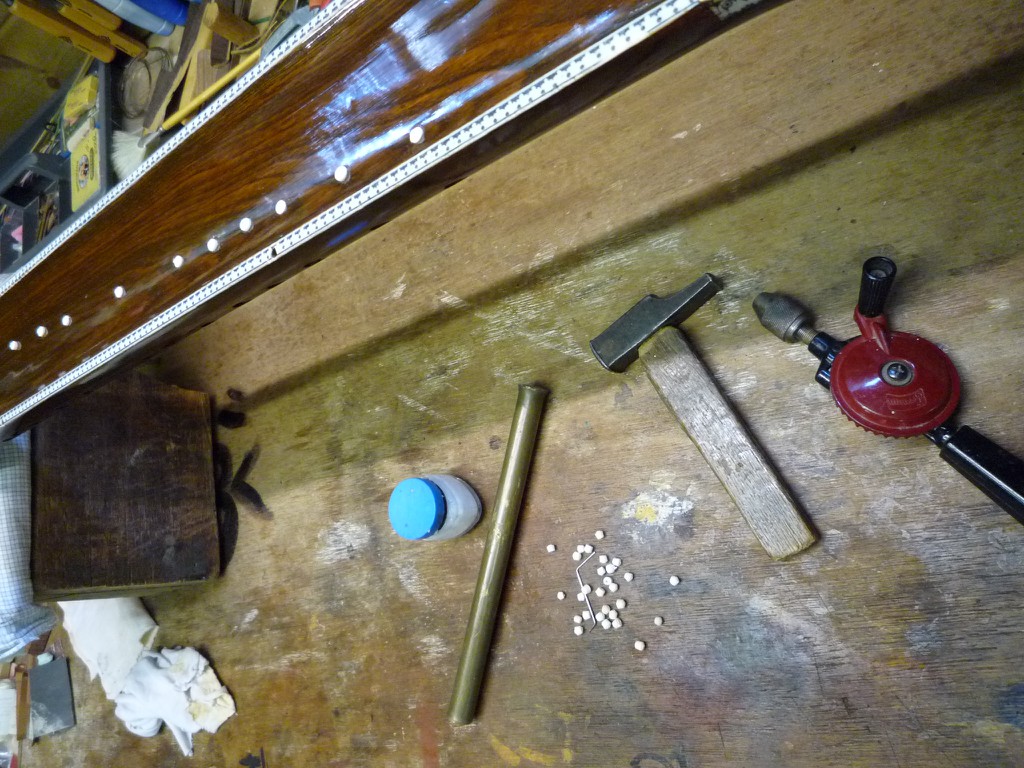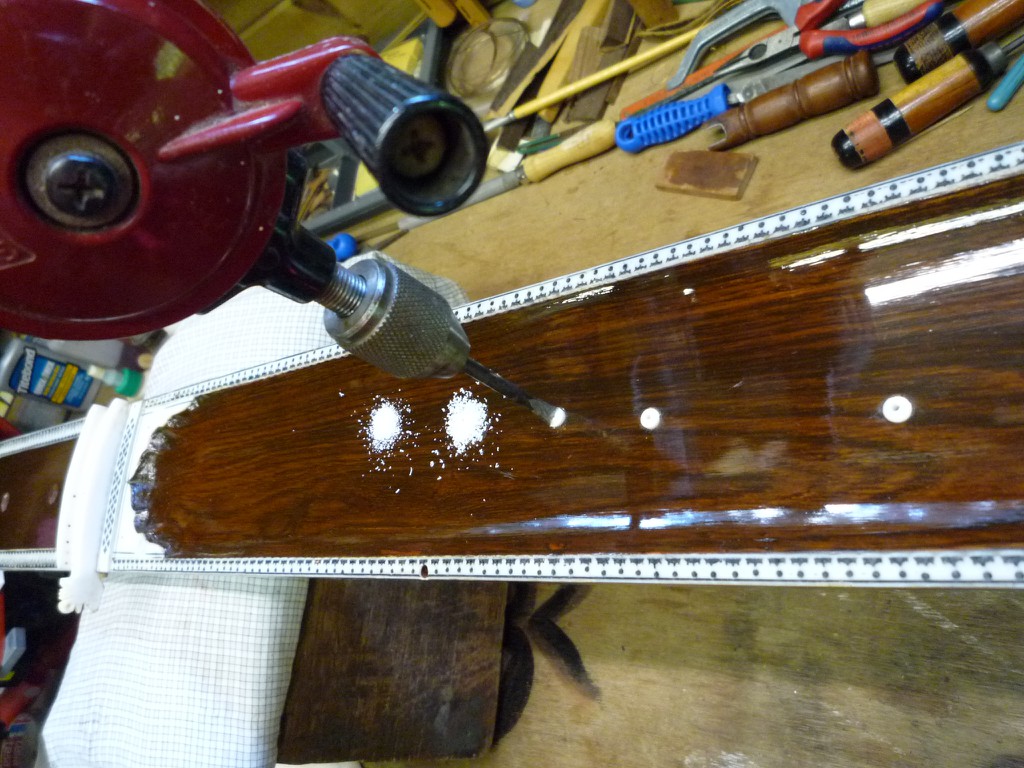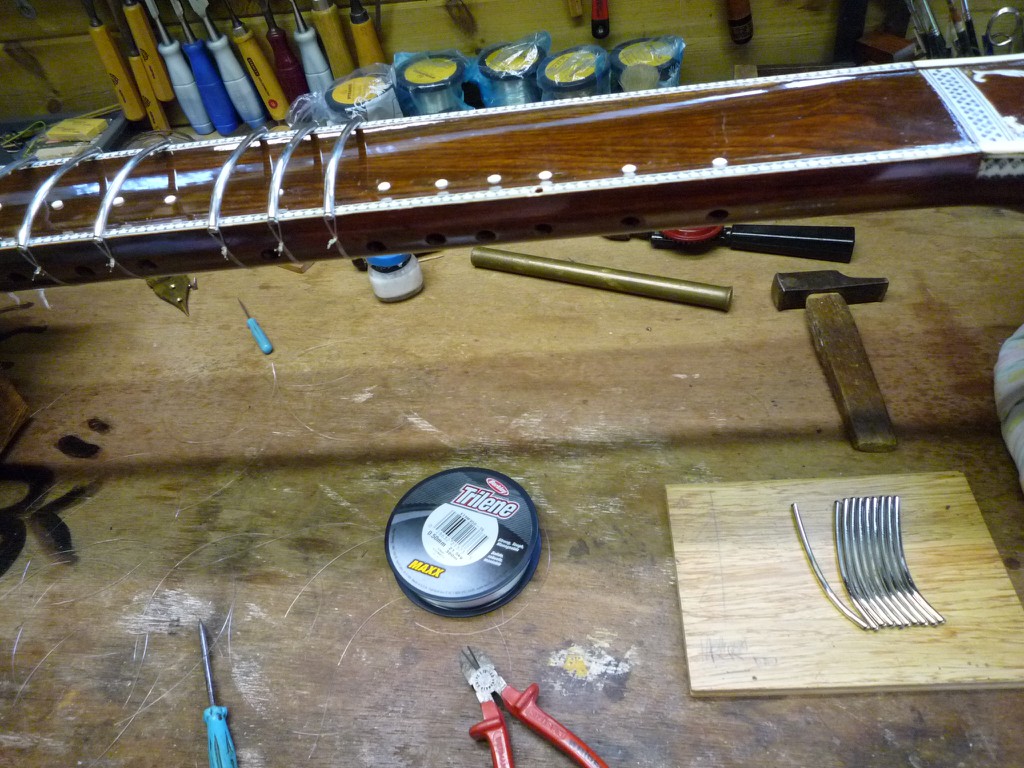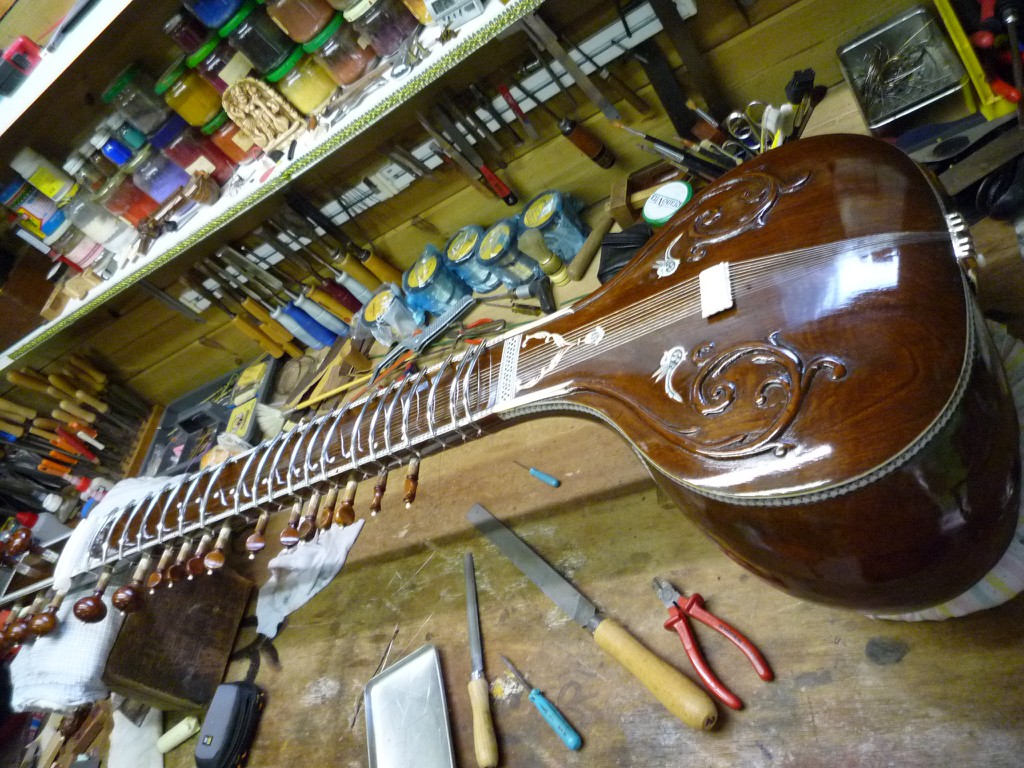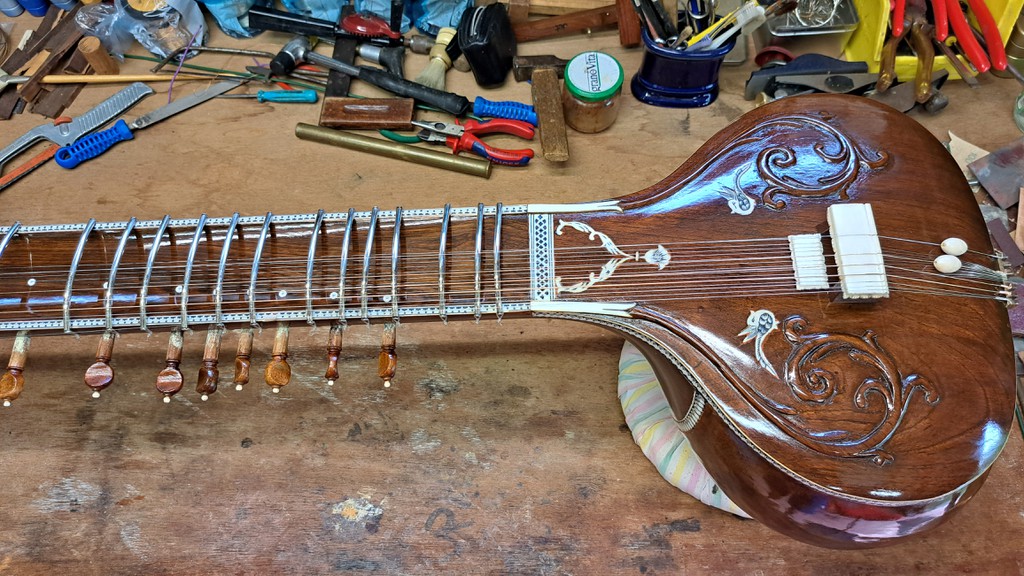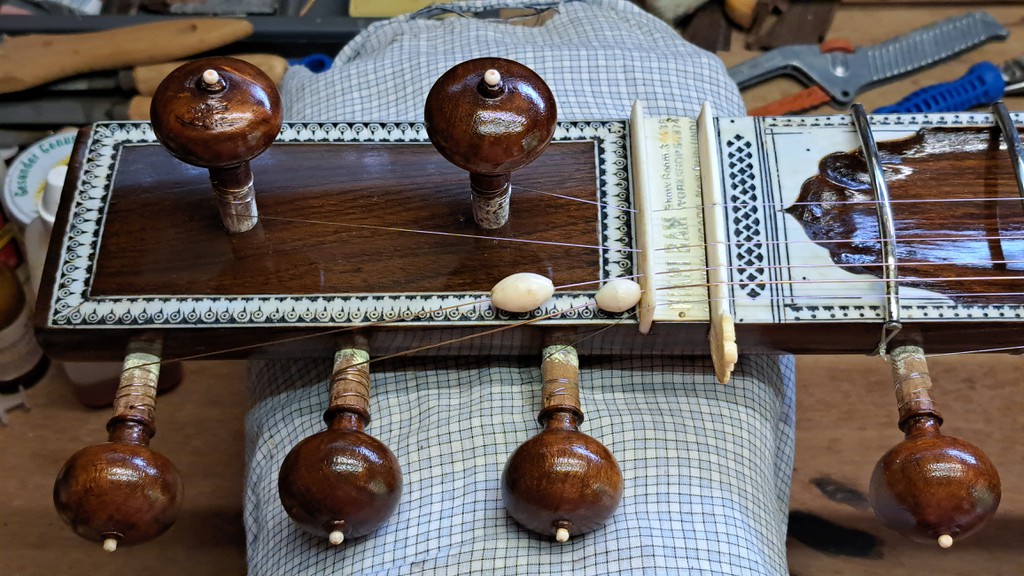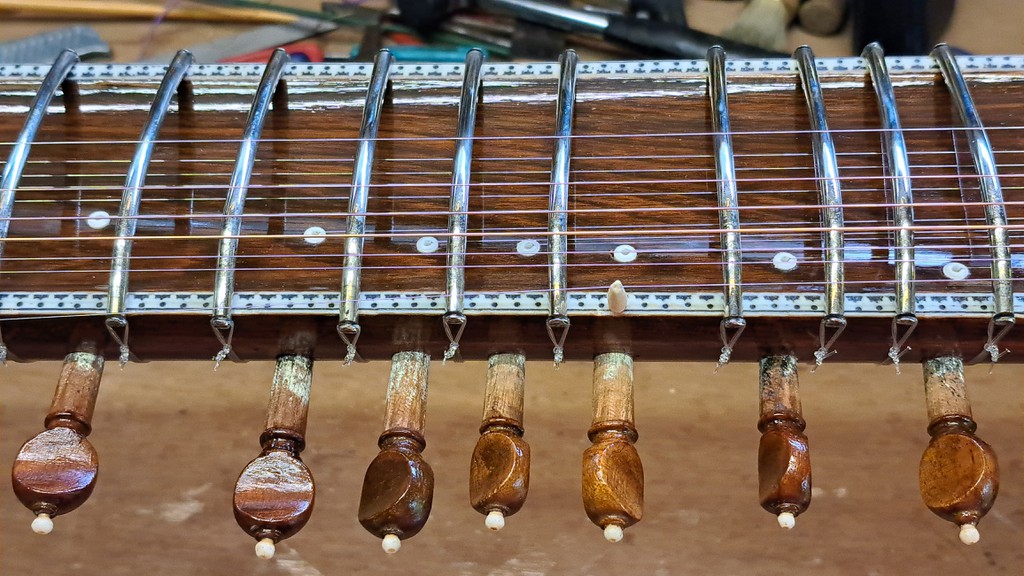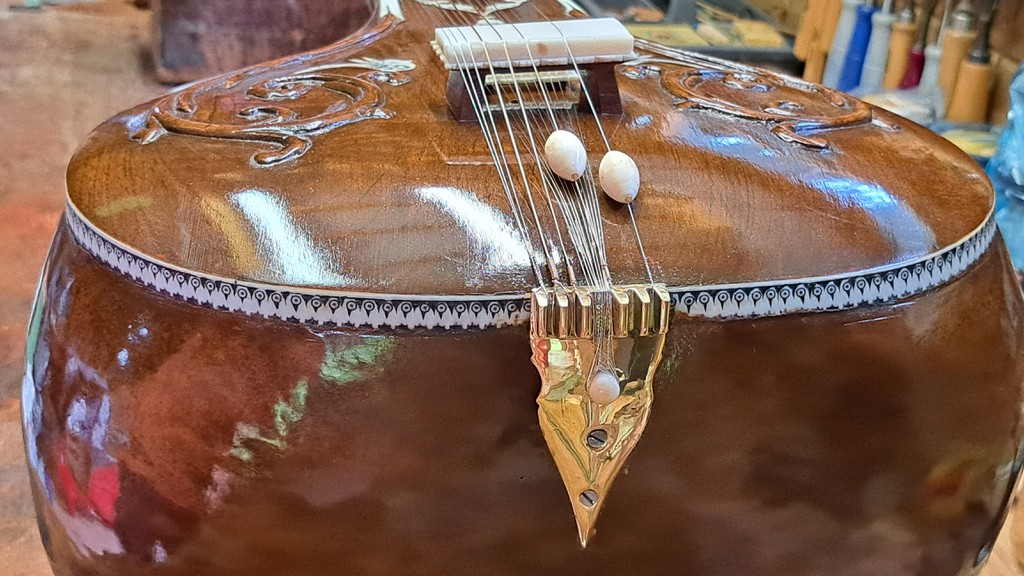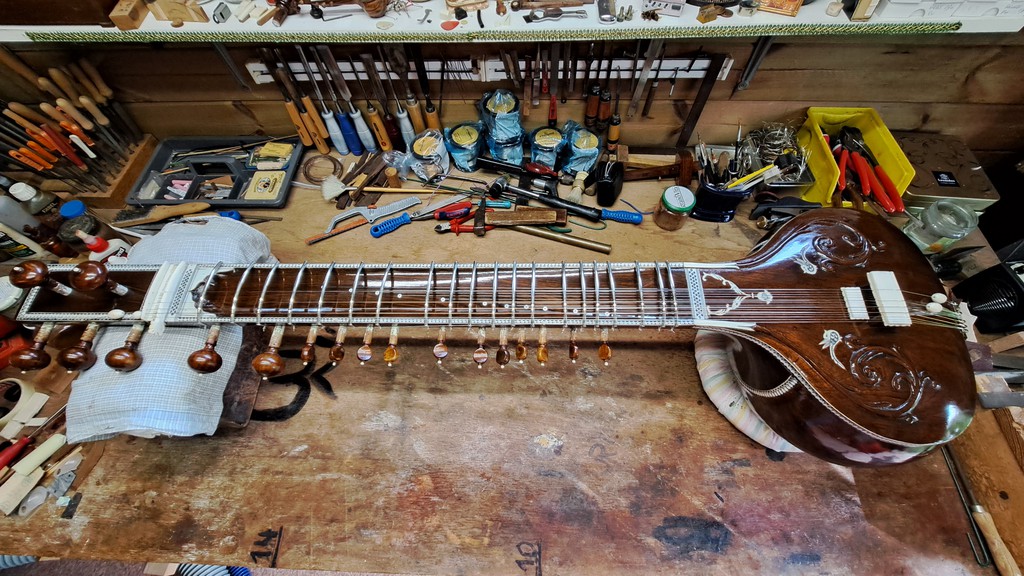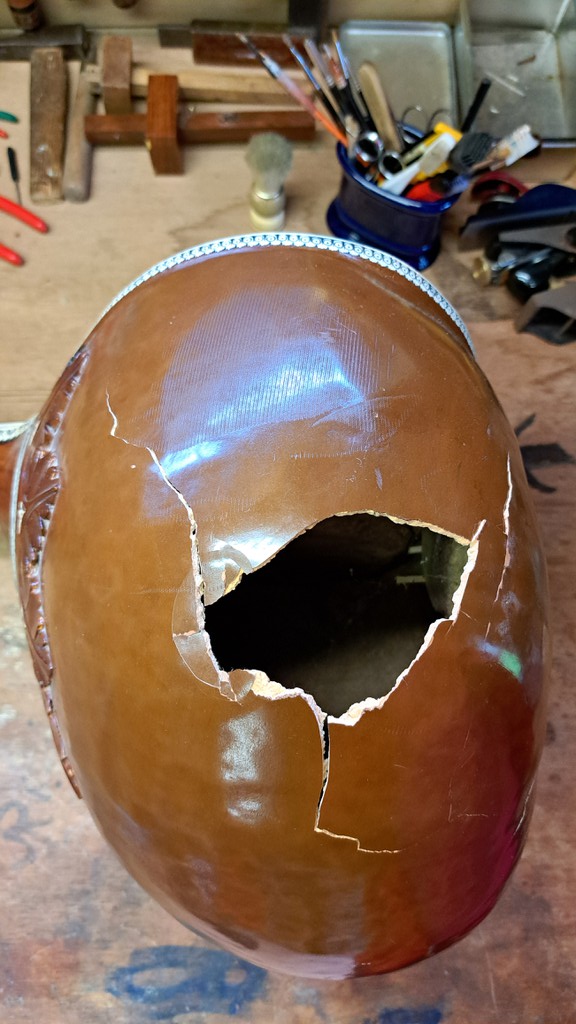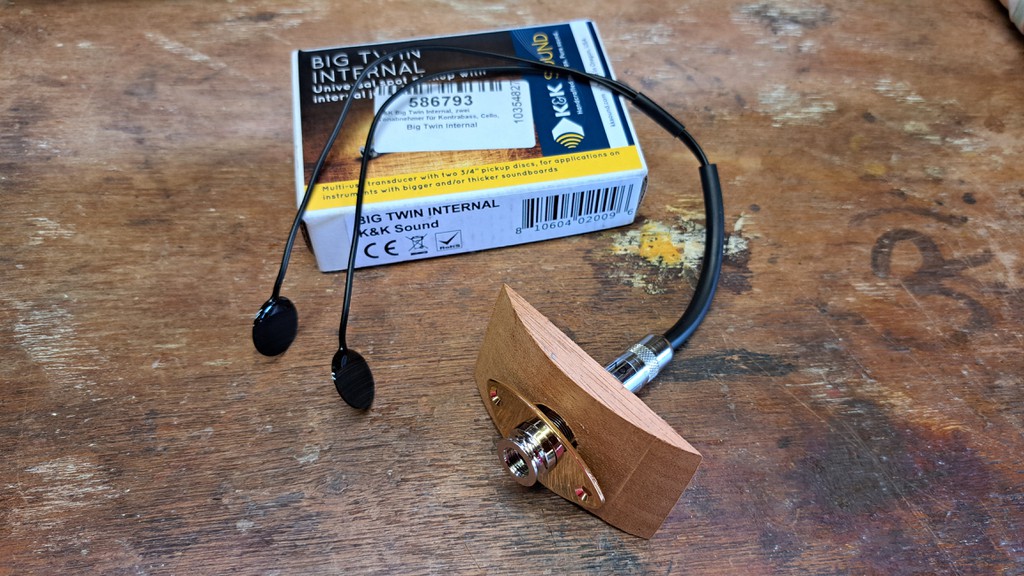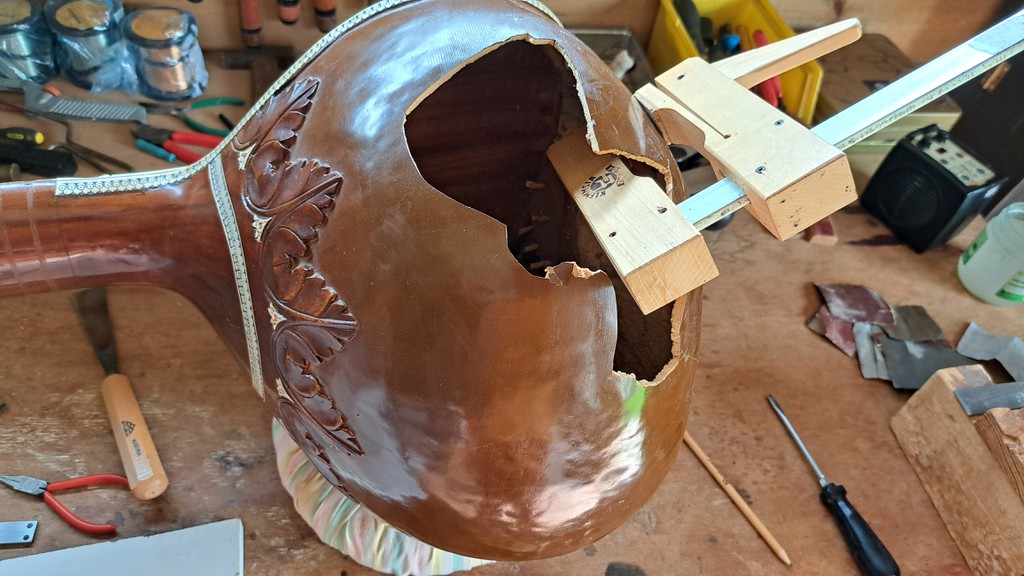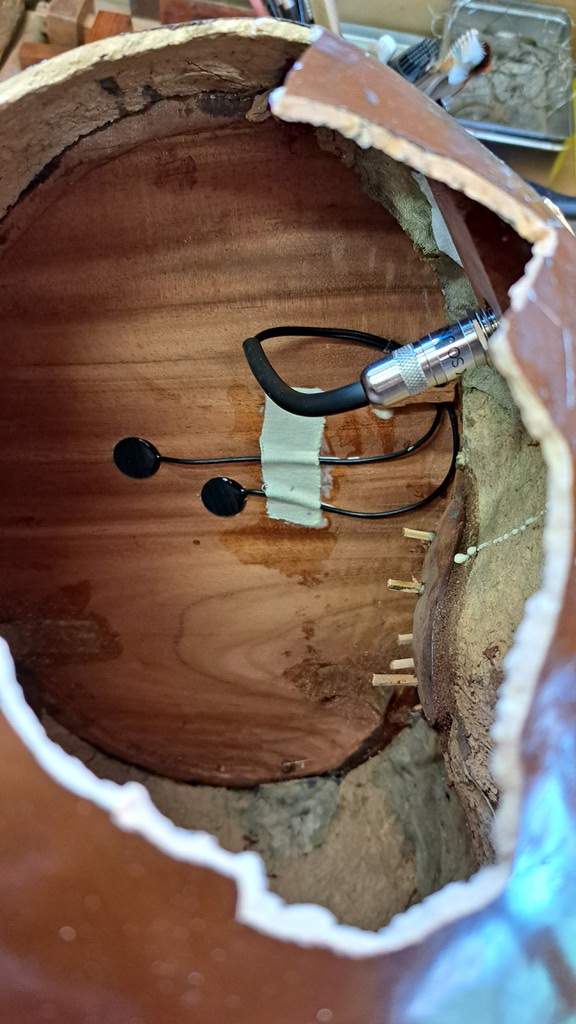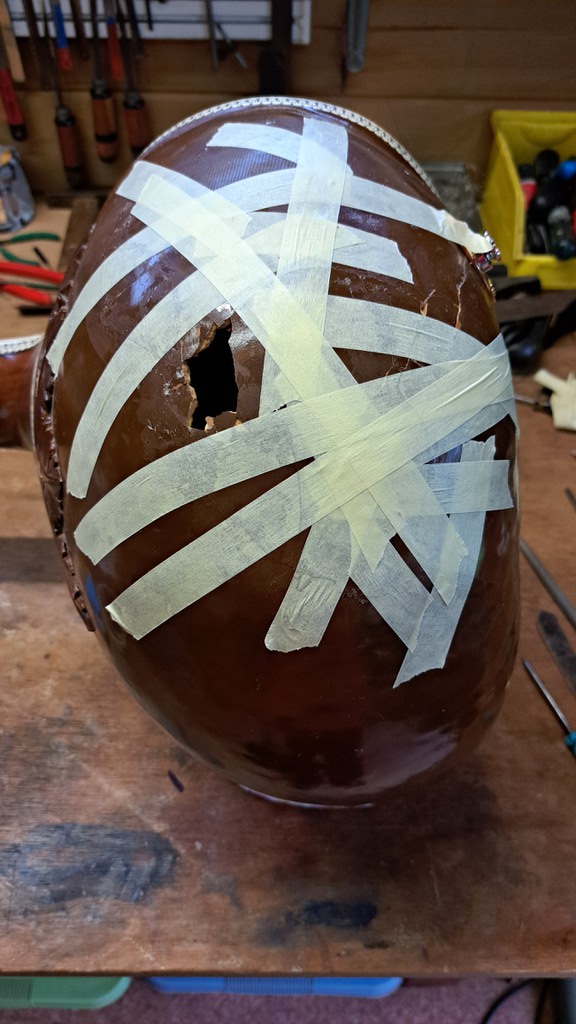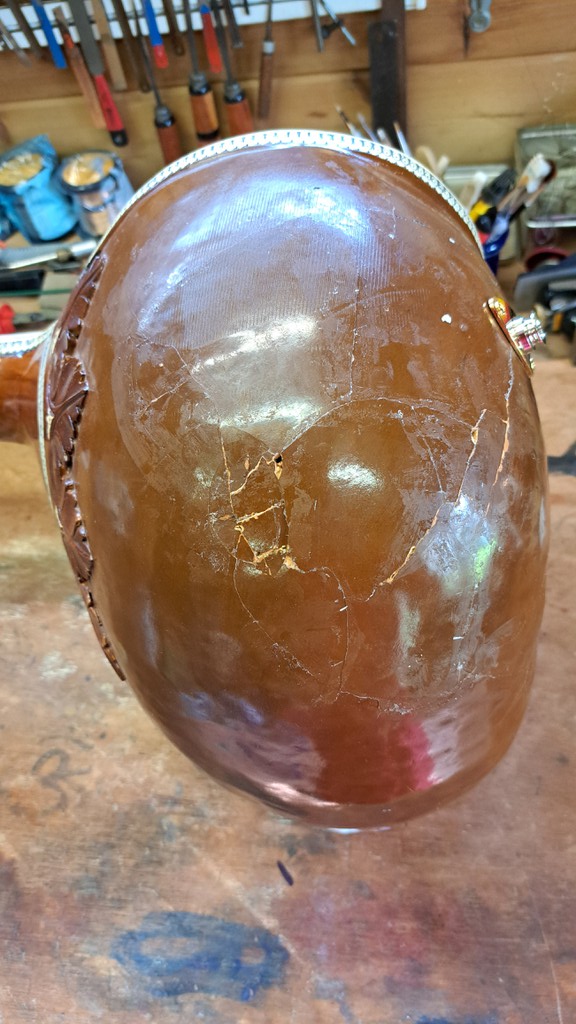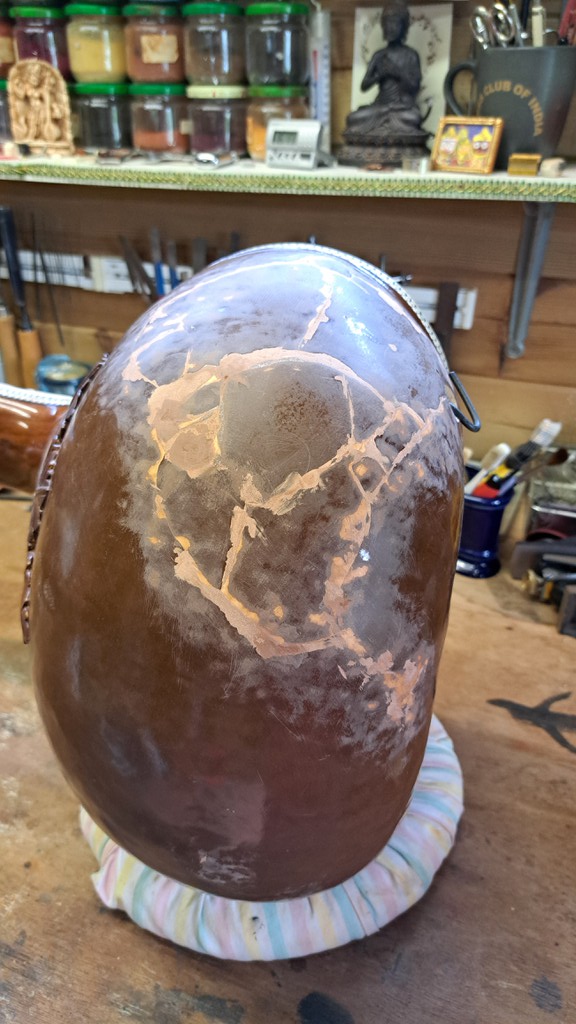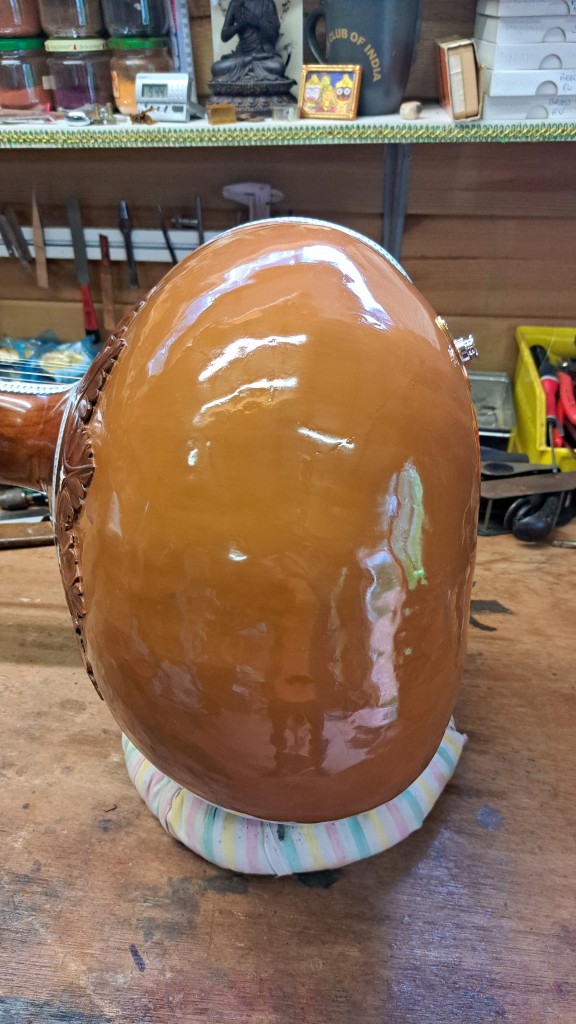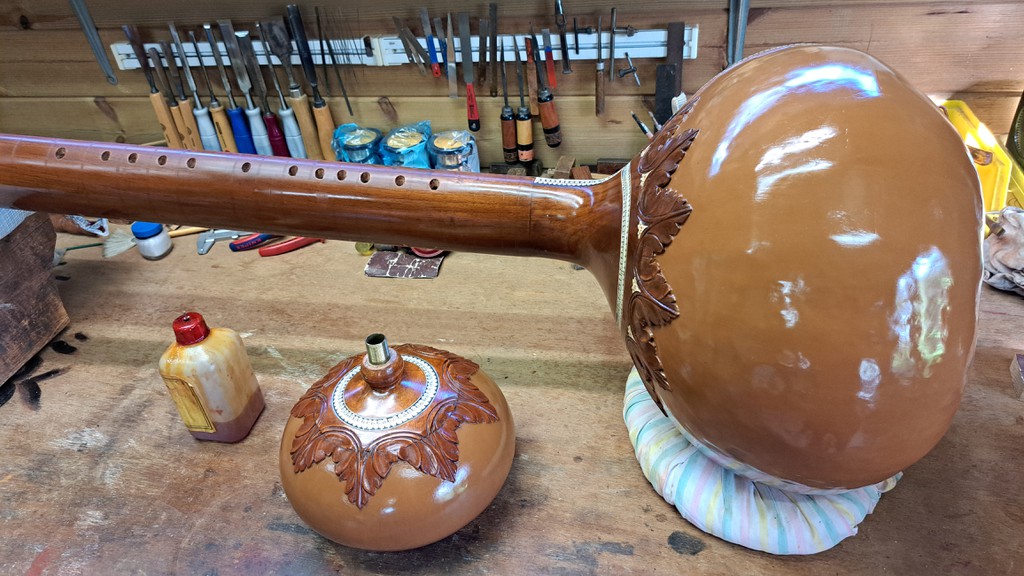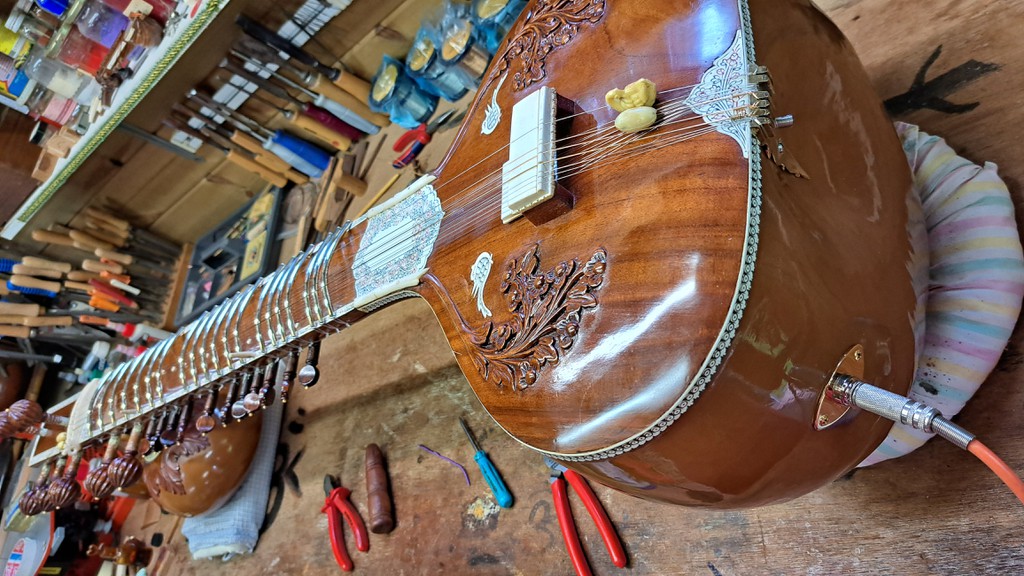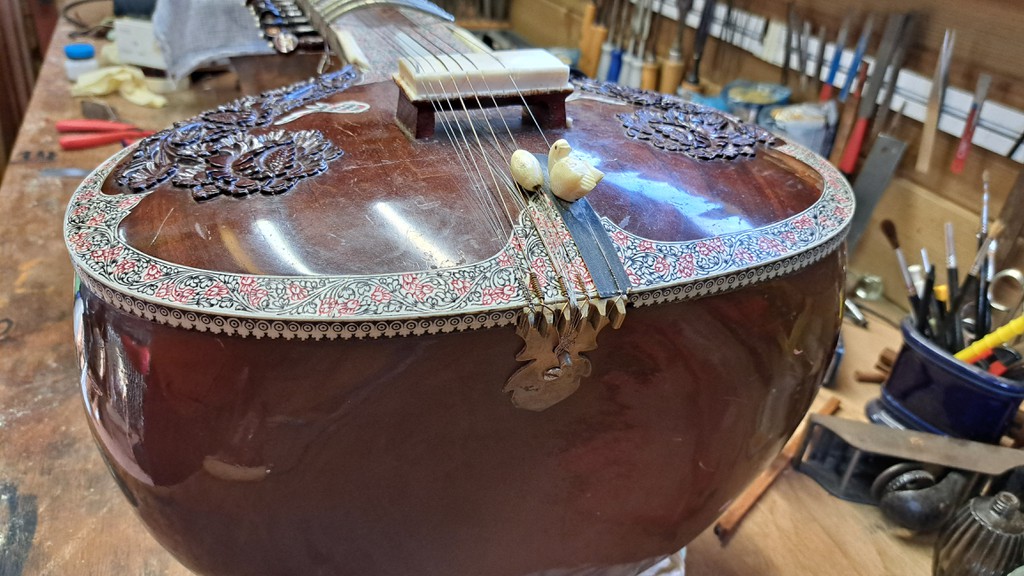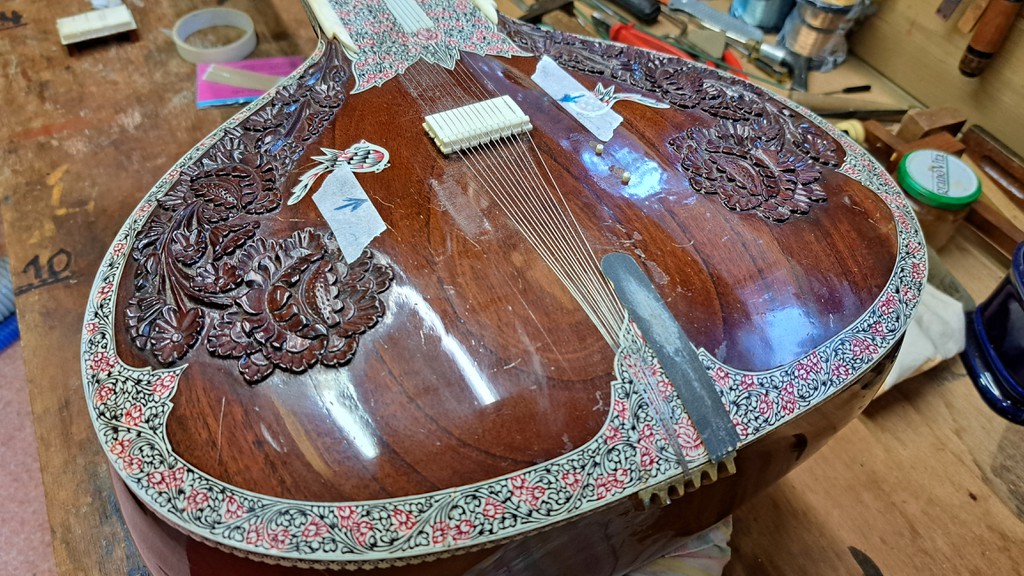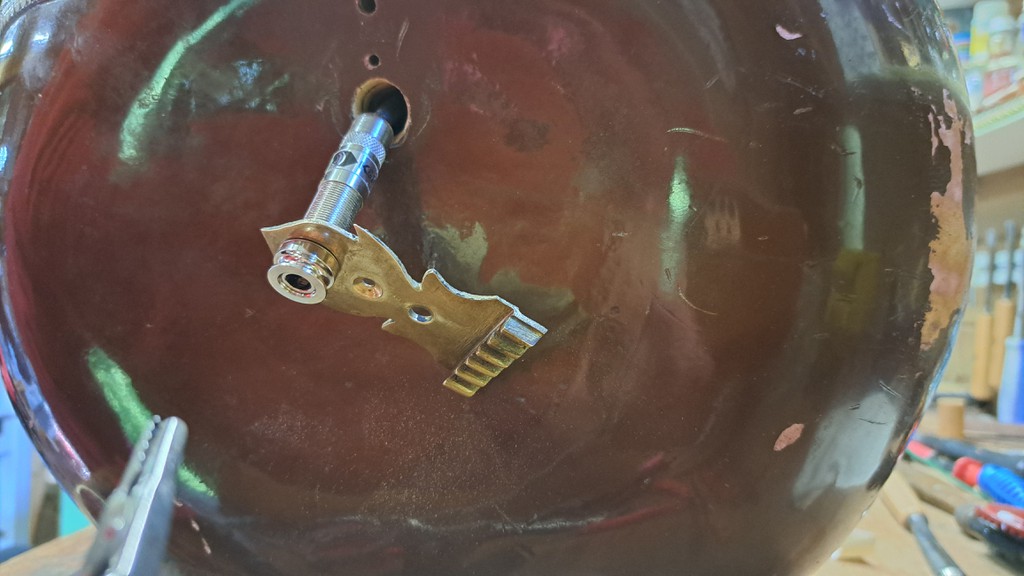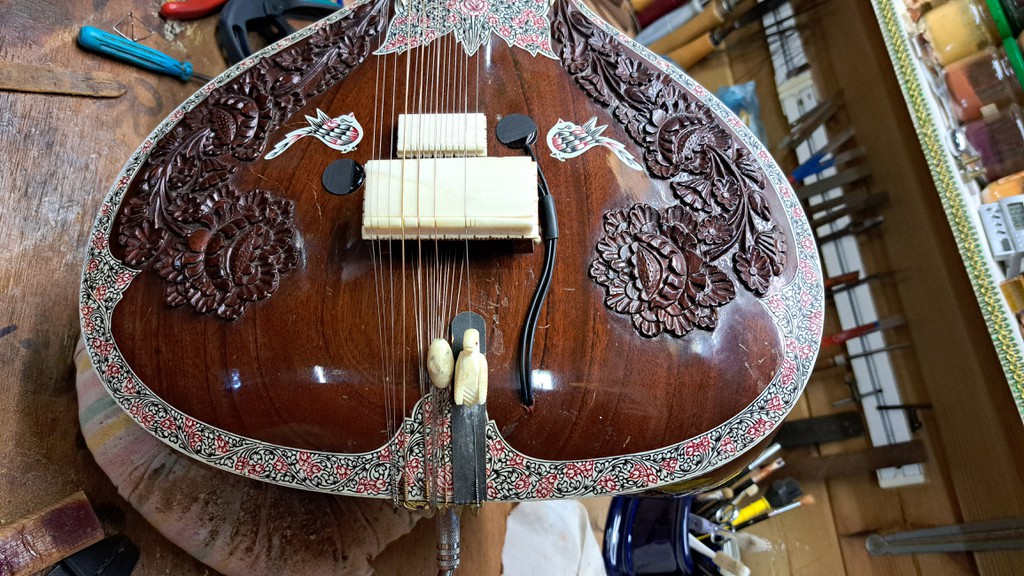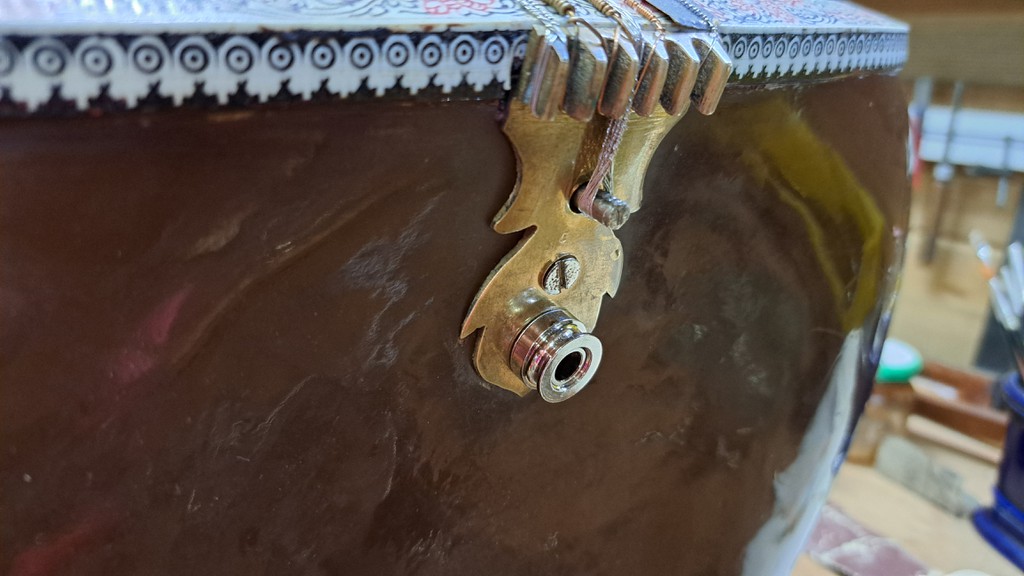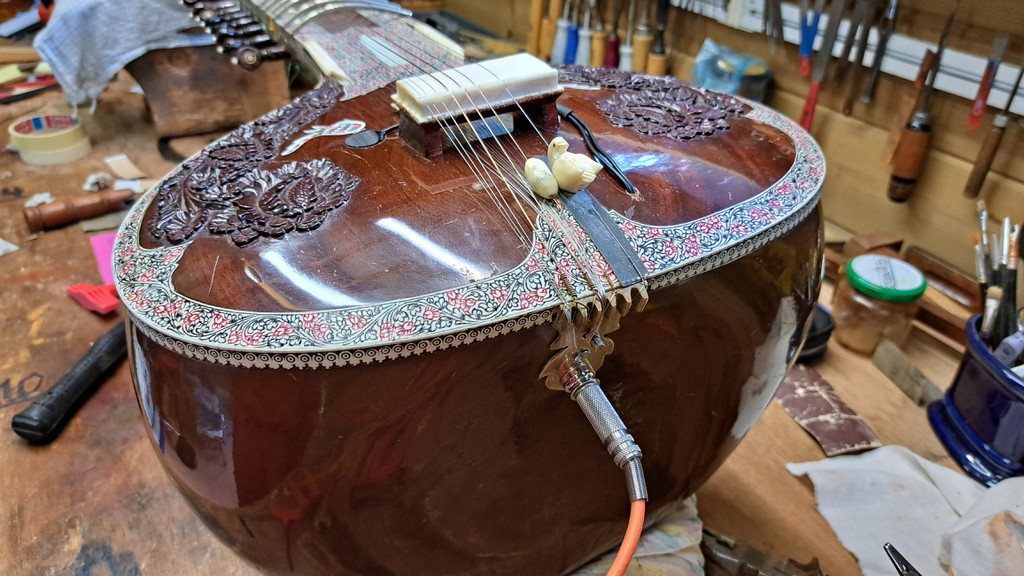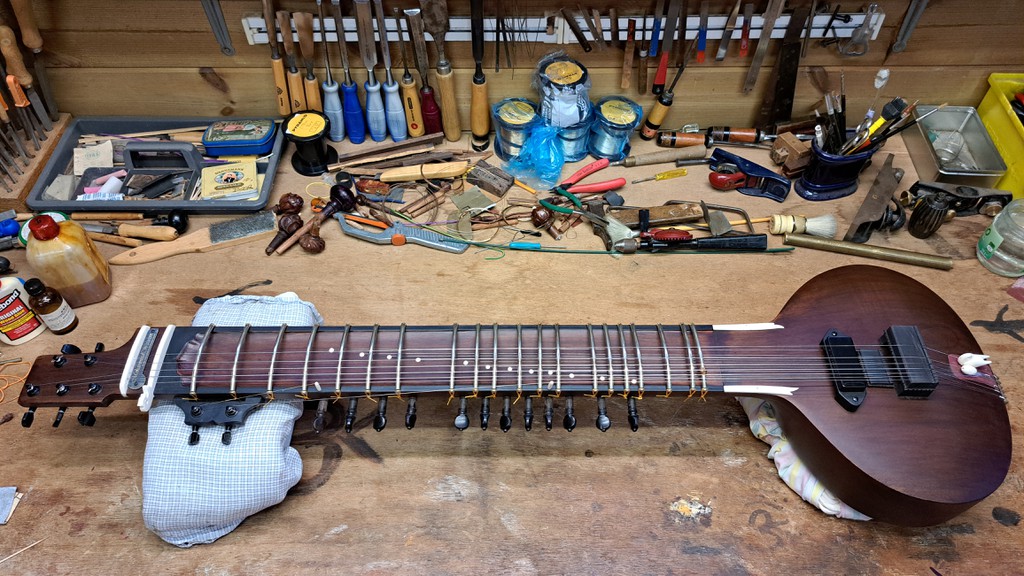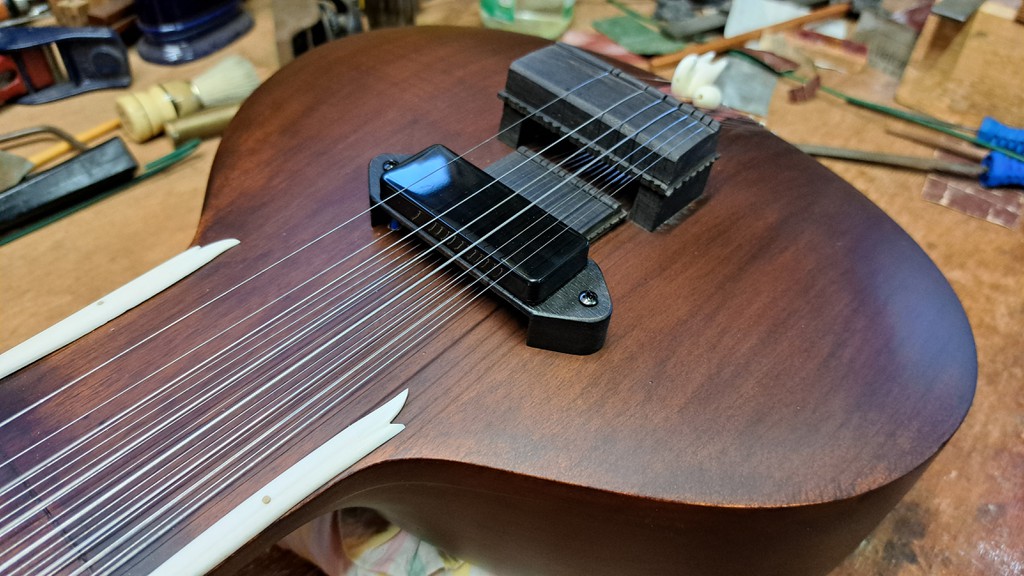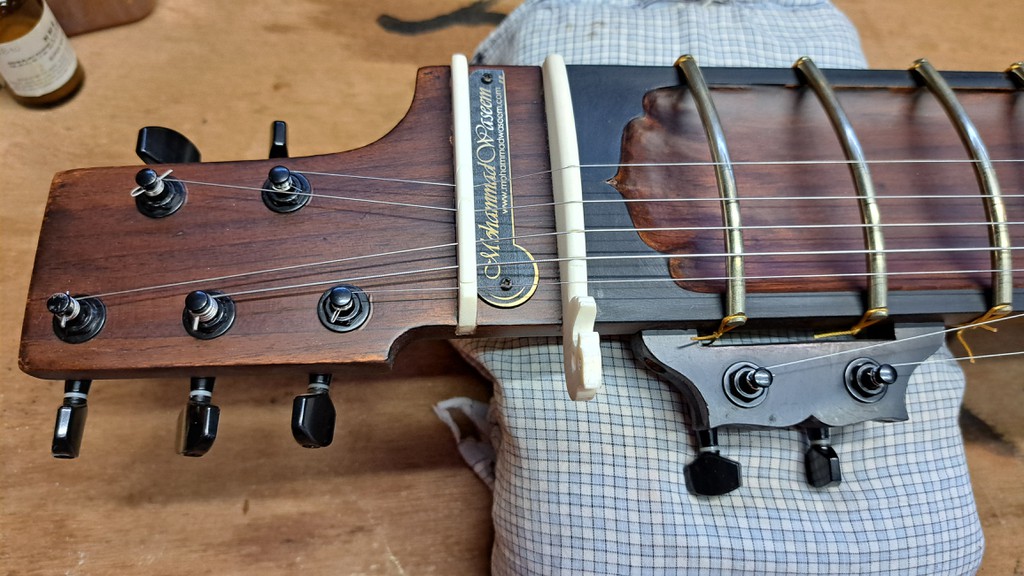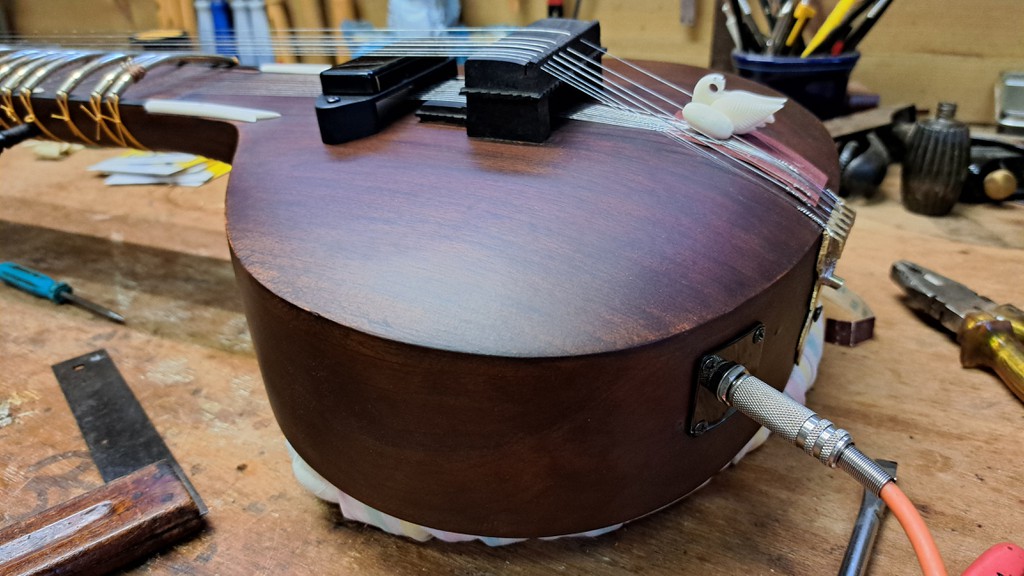Ever fallen in love with a sarod but you couldn’t find one? Personally I love the sound of sarod very much but can’t play it. That’s pretty the same problem. Here’s a way out:
A simple solution is to convert an existing old guitar into a Sarod guitar. In other words, the best of both worlds. The idea is not new. I did it back in 2007 (read article here) but it got very quiet about that project. I don’t know why. Now there is a new attempt..:
Frederik VdB brought me his Morgan guitar on which he decided not to play anymore. One of the reasons was a solid crack in the soundboard. That had to be repaired first.
Then all the frets had to be removed and the empty slots filled with homemade wood dust paste. The surface was scraped and sanded firmly and finely. All pores were filled and it became smooth, almost like a mirror.
In place of the guitar’s E & A strings will be 2 cikari strings. These are tuned high (D4 & D5) and need a shorter scale. Therefore, by analogy with a sitar, I have integrated cikari pins on the fretboard. One at half spacing and one at 3/4th spacing. A small eye is mounted behind the pin at half distance that pulls the string down enough so that it stays well on the pin.
Because the cikari strings are always struck together, they are also shorter together. This is easy to see from the bridge. The D4 string makes a small bend. 😉
Sarod Guitar specifications & tuning chart:
Scale = 65cm
1. steel wire 0.36mm / N°5 tuned to MA (= G 3)
2. bronze wire 0.46mm / N°26 tuned to SA (= D 3)
3. bronze wire 0.75mm / N° 22 tuned to lower PA (= A 2)
4. nickel flatwound string 1,27mm / tuned to lower SA (= D 2)
5. steel wire 0.23mm / N° 0 tuned to SA (= D 4)
6. steel wire 0.21mm / N° 00 tuned to higher SA (= D 5)
Read here about another Sarod Guitar modification (2007).

